422125901731114656
Author: Chris S.
-

Maximizing Workplace Safety: The Essential Guide to Machinery Safety Guards
In the bustling world of industrial operations, machinery safety guards stand as the unsung heroes, offering a robust shield between the operators and potential hazards. These pivotal components of any industrial workspace not only ensure the well-being of your workforce but they also amplify productivity by minimizing mishaps. However, a comprehensive understanding of these safety guards is often overlooked, leading to compromised safety standards.
This blog will delve into the intricate world of machinery safety guards, highlighting their importance, functionality, and the precautions required to enhance industrial safety. By unraveling the complexities of these defensive apparatuses, we aim to foster a safer, more efficient industrial environment that prioritizes employee security above all else.
The Importance of Safety Guards

In the realm of industrial operations, machinery safety guards are not just an optional accessory; they form an integral part of the safety protocol. Imagine playing a high-stakes game of chess without a queen. That’s akin to operating heavy machinery without appropriate safety guards.
They function as the protective shield, intercepting any potential harm that could befall the operator. Machinery safety guards are the unsung heroes of industrial safety. They quietly do their job, reducing risks and preventing accidents, much like a vigilant goalkeeper in a soccer match, protecting the goalpost from any unwelcome intrusions.
They form the first line of defense against potential hazards that can result from machine operation such as flying debris, sparks, or even accidental contact. Their importance transcends mere physical protection. The psychological reassurance that these guards provide to machinery operators is priceless.
Knowing that a robust safety measure is in place allows workers to focus on their tasks without being burdened by safety concerns. This not only enhances productivity but also fosters a safe and secure work environment. In essence, machinery safety guards are the stalwart knights of industrial safety, silently standing guard and ensuring that the machinery kingdom operates smoothly and safely.
Investing in them is not just a regulatory requirement, but a commitment to the well-being of your workforce. So the next time you see a piece of machinery, remember to acknowledge the steadfast guard that stands by it, protecting and serving.
Preventing Accidents with Guards
Implementing machinery safety guards is a proactive approach to creating a safer work environment. These protective barriers serve as the first line of defense, shielding personnel from potential hazards associated with moving parts of machinery. Not only do they protect workers from inadvertent contact, but they also prevent flying debris, sparks, and splashes of hazardous materials.
By employing machinery safety guards, businesses can significantly minimize the risk of accidents and injuries, fostering a culture of safety while also complying with regulatory standards. Indeed, the use of safety guards is a mark of a responsible, safety-conscious organization.
The Role of Guards in Compliance
Machinery safety guards play an integral role in maintaining compliance with workplace safety regulations. These unsung heroes of the factory floor do more than just prevent accidents; they are an essential part of a much larger system. By effectively shielding workers from the raw power of industrial machinery, they ensure that businesses adhere to stringent safety standards.
Hence, these humdrum-looking machinery safety guards are the silent sentinels, ensuring a harmonious balance between productivity and safety, while keeping the compliance inspectors content. So, let’s tip our hard hats to these guardians of compliance and safety.
Types of Safety Guards for Machinery
Understanding the Different Types of Machinery Safety Guards Machinery safety guards are an essential component of any industrial or manufacturing setting. They are designed to protect operators and other employees from potential hazards associated with machinery operation, such as moving parts, flying debris, sparks, and excessive noise. However, it’s important to note that not all machinery safety guards are created equal.
There are different types designed for specific applications and machinery. The most common type is the fixed guard, which is permanently attached to the machine. These guards are typically used in areas with minimal operator interaction, providing a robust and permanent barrier between the operator and the machine parts.
Adjustable guards, on the other hand, offer flexibility. They can be moved or adjusted to accommodate different sizes of material or to allow closer proximity to the machine during setup or maintenance tasks. Then there are interlocked guards, designed to shut off or disengage the machine when opened or removed.
This type is ideal for machinery that requires frequent access during operations. Lastly, we have self-adjusting guards. These automatically adjust to the size and shape of the material being inserted into the machine, offering optimal protection without compromising productivity.
Choosing the right machinery safety guards involves a keen understanding of your machinery, processes, and the tasks performed by your operators. By making an informed choice, you can ensure a safe and efficient work environment, safeguarding both your employees and your business.
Fixed Guards: An Overview
Fixed guards are the unsung heroes of machinery safety, acting as steadfast barriers between workers and potential hazards. These stalwart protectors, commonly known as machinery safety guards, are a crucial aspect of any industrial work environment. They are designed to provide an impenetrable shield, ensuring the moving parts of any machinery remain out of harm’s way.
Fixed guards offer an effective, no-nonsense solution to safeguarding employees, reducing downtime caused by accidents, and fostering a culture of safety within the workplace. Indeed, a well-guarded machine is a testament to the value placed on human life in the industrial setting.
Interlocked Guards and Their Uses
Interlocked guards are an invaluable device in the realm of machinery safety, acting as vigilant gatekeepers for users. These guards are ingeniously designed to automatically shut off or disengage a machine when the guard is opened or removed, ensuring the safety of operators. Often utilized in manufacturing and industrial settings, they serve to prevent accidents and injuries that could result from contact with moving parts, flying debris, or sparks.
Thus, interlocked guards are not just a smart addition to your machinery, but essential assets for maintaining a safe and productive working environment. This ingenious invention is indeed a testament to the adage, “Prevention is better than cure.”
Adjustable Guards: Pros and Cons
Adjustable machinery safety guards are an indispensable component in any industrial workspace, ensuring the safety of employees while enabling efficient operation. These versatile fixtures offer a host of benefits, including customization to suit varying machine sizes and types, improving accessibility and maintenance ease. However, they also present some drawbacks.
Their adjustability can potentially compromise safety if not properly managed and they may require frequent checks to ensure optimal functioning. Despite these challenges, the benefits of adjustable machinery safety guards far outweigh the cons, making them a worthy investment for any business prioritizing worker safety and operational efficiency.
Installation and Maintenance of Guards

Section Title: The Intricacies of Installing and Maintaining Machinery Safety Guards Machinery safety guards are the unsung heroes of the industrial workspace, silently protecting employees from accidents and injuries. These vital components are essential to maintaining a safe and productive atmosphere, but their installation and maintenance is not always as straightforward as it may seem. Installation of machinery safety guards requires a keen eye for detail and a deep understanding of the machinery’s operational mechanisms.
These guards must be positioned to provide maximum protection without interfering with the machine’s functionality. The process demands precision, patience, and a high degree of technical knowledge. Once installed, the real work begins.
Regular maintenance of these safety guards is pivotal to their efficiency. This involves periodic inspections to check for wear and tear, timely replacements, and ensuring that they remain securely affixed to the machinery. A poorly maintained safety guard can be just as hazardous as not having one.
Investing time and effort in the proper installation and maintenance of machinery safety guards is not just about compliance with safety regulations. It’s about creating a workspace that prioritizes the well-being of its people. After all, a safe workplace is a productive one, and machinery safety guards are at the heart of this equation.
Effective Installation Techniques
Installing machinery safety guards effectively requires meticulous planning and execution. It’s not just about bolting a barrier in place, but rather, carefully assessing the machinery and understanding the potential risks. This includes identifying moving parts, pinch points, flying debris, and other potential hazards.
Once these risks are identified, the right safety guards can be selected and strategically installed. This might involve using adjustable or self-adjusting guards, fixed guards, or interlocked guards, depending on the machine’s design and function. The key is to ensure maximum safety without hampering the machine’s operation – a clever balancing act that requires expertise and precision.
Maintaining Safety Guards
Ensuring the longevity and effectiveness of machinery safety guards is imperative in creating a secure working environment. Regular inspections, timely replacements, and comprehensive cleaning are just a few maintenance practices that can enhance the safety quotient. A well-maintained safety guard not only safeguards the machine but also boosts the productivity of the workforce.
Thus, the significance of machinery safety guards cannot be overstated. Keeping them in top-notch condition is not just a safety measure, but a smart business move. After all, a stitch in time, especially in the realm of machinery safety, indeed saves nine!
Safety Guards: Legal Requirements
Compliance with legal requirements is crucial when it comes to the installation and use of machinery safety guards. These essential devices are not just a savvy investment for safeguarding your machinery; they serve as a protective shield for your workforce, preventing accidents and potential liability. According to the Occupational Safety and Health Administration (OSHA) in the United States, employers are legally required to provide their employees with a work environment free from recognized hazards, which includes the provision of machinery safety guards.
These guards are designed to prevent contact with dangerous moving parts, control hazardous energy, and protect against flying debris. In the United Kingdom, the Provision and Use of Work Equipment Regulations 1998 (PUWER) stipulates that all machinery should have suitable guards in place and maintained to ensure safety. The Canadian Centre for Occupational Health and Safety also emphasizes the importance of machine guards in preventing worker injuries.
Remember that each machine may require a specific type of guard, designed to provide optimal protection while not hindering the machine’s operation. It’s not simply about having guards in place; it’s about having the right guards, correctly installed, and routinely inspected. In a nutshell, machinery safety guards are not just a box to tick on your compliance checklist.
They are a testament to the value you place on human life and well-being, a silent reminder of your commitment to safety. So, don’t just guard your machines; guard the heart of your operation – your people.
Frequently Asked Questions (FAQs)
What are machinery safety guards?
Machinery safety guards are protective devices designed to prevent contact with moving parts of a machine, thus ensuring the safety of the operator and other workers in the vicinity.
Why are machinery safety guards important in an industrial setting?
Machinery safety guards are essential in an industrial setting to protect workers from potential hazards, such as cuts, burns, or crushing injuries that can occur due to contact with moving parts. They also help prevent accidents that can lead to equipment damage and work stoppages.
What are the different types of machinery safety guards?
There are several types of machinery safety guards, including fixed guards, interlocked guards, adjustable guards, self-adjusting guards, and perimeter guards. The type of guard used depends on the machine and the nature of the task being performed.
How do I ensure that machinery safety guards are being used effectively?
To ensure effective use of machinery safety guards, regular inspections and maintenance should be conducted. This includes checking for damage, ensuring the guard is correctly fitted and is not interfering with the operation of the machine, and training employees on the importance and correct use of the guards.
Are there any standards or regulations regarding machinery safety guards?
Yes, there are numerous standards and regulations regarding machinery safety guards. For example, the Occupational Safety and Health Administration (OSHA) in the U.S. has set specific requirements for machine guarding in the workplace. It’s crucial for businesses to comply with these regulations to ensure worker safety and avoid penalties.
How can machinery safety guards impact productivity?
While some may view machinery safety guards as a hindrance to productivity, the opposite is actually true. By preventing accidents, they can reduce downtime caused by injuries and equipment damage. Furthermore, they can enhance worker confidence, leading to more efficient operation of the machinery.
Conclusion
Machinery safety guards are like the unsung heroes of the industrial world, discreetly ensuring the safety of operators and protecting the machinery from potential damage. They are the knight in shining armor for the damsel in distress, the superhero to the city in danger. Always remember – the absence of a safety guard may result in a thrilling story of survival, but its presence guarantees a long, uninterrupted story of productivity and safety.
So, let’s raise a wrench to these silent guardians, these watchful protectors – our safety guards!
-
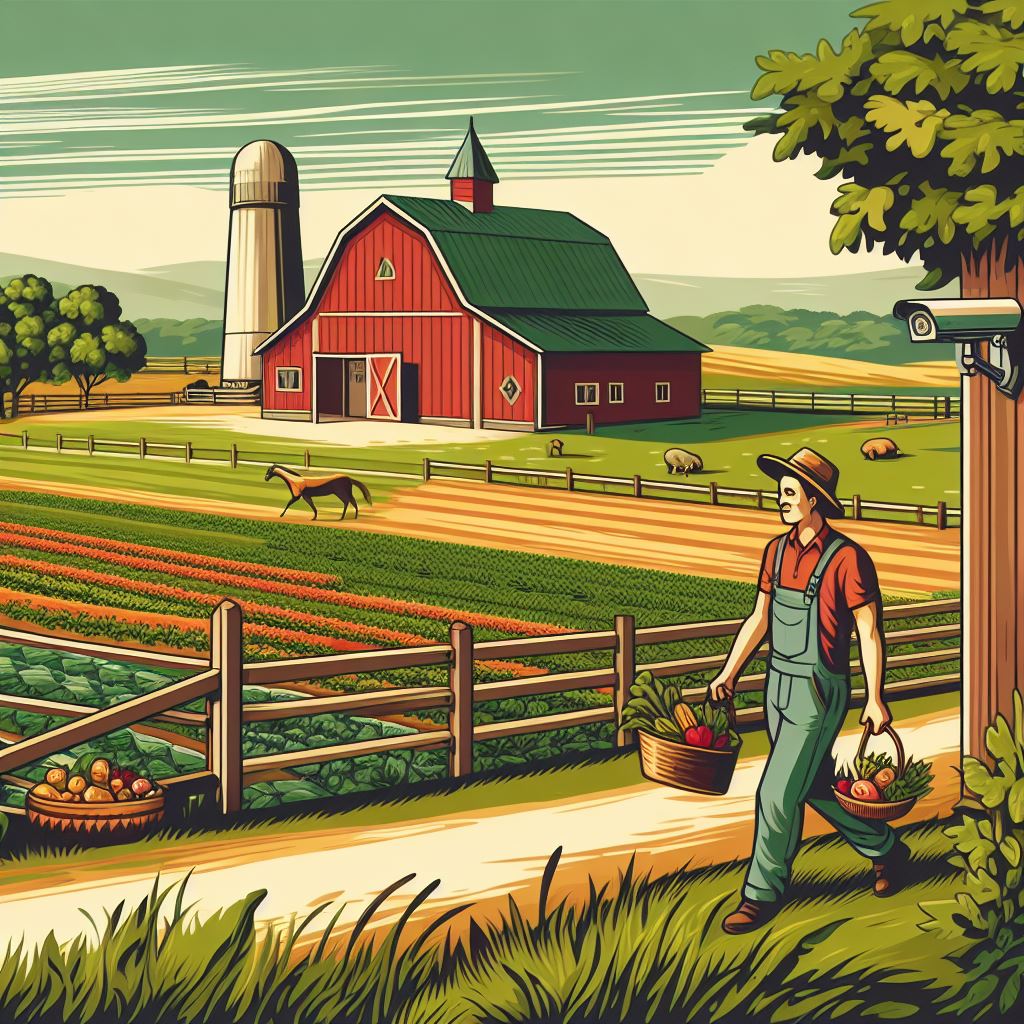
Beyond Security: Other Uses For Farm Surveillance Cameras
In an era where security is paramount, Farm Surveillance Cameras have become a must-have tool for every modern farmer. They not only provide peace of mind but also offer effective monitoring solutions to enhance productivity and safety around the farm. Whether you’re looking to curb livestock theft, monitor farm activities, or simply keep an eye on your property, farm surveillance cameras are your reliable allies.
In this comprehensive guide, we delve into the world of farm surveillance cameras, providing you with invaluable insights to help you make the most of these essential farming tools. So, let’s embark on this journey of discovery, exploring the best surveillance solutions for your farm.
Importance of Farm Surveillance
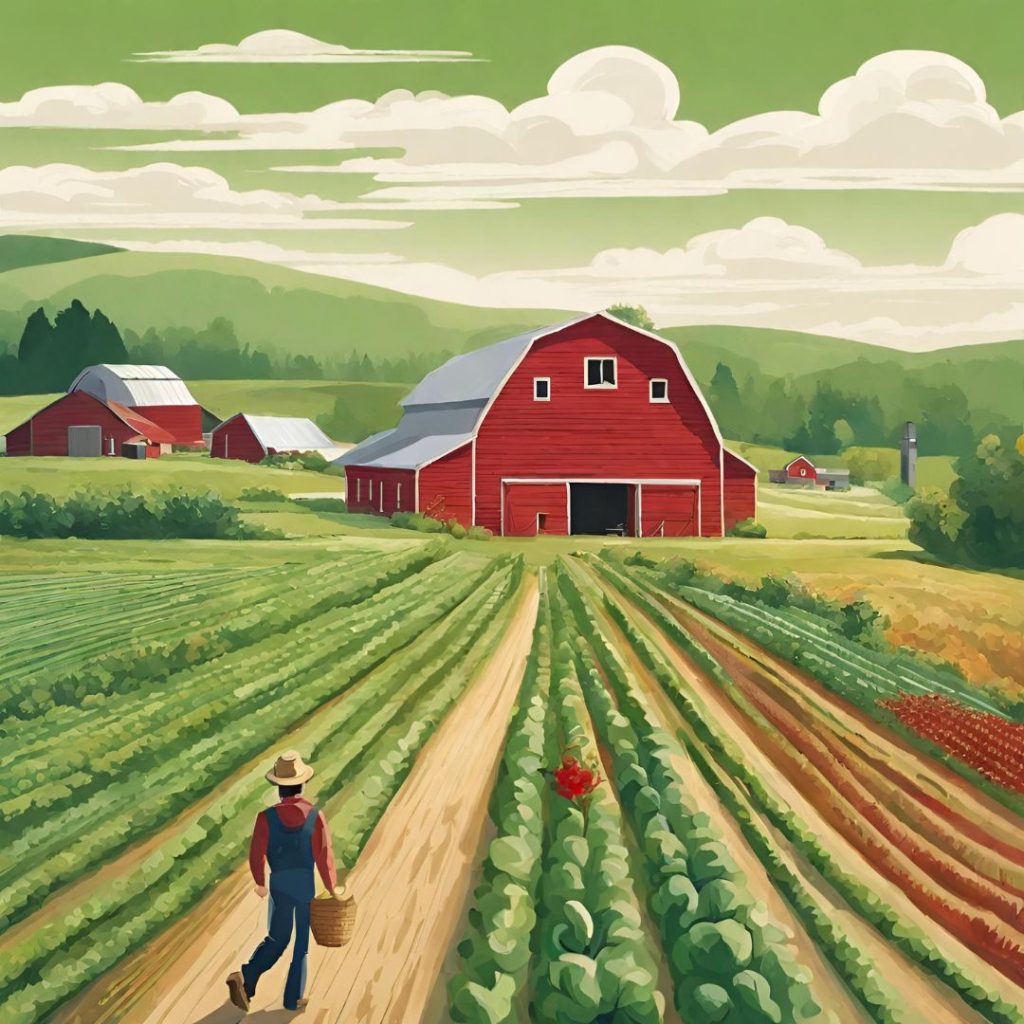
The agricultural sector has always been an integral part of our society, providing sustenance and livelihood to countless individuals. However, with the rise of various threats such as theft, vandalism, and even unpredictable weather, there is an ever-increasing need to safeguard our farms. This is where the role of farm surveillance cameras comes into play.
Farm surveillance cameras provide an extra layer of protection to your agricultural property. These technologically advanced tools offer real-time monitoring and data collection, enabling farmers to keep a close watch on their crops, livestock, and equipment. With farm surveillance cameras in place, any unusual activity can be detected promptly, mitigating the risk of potential losses.
Moreover, these cameras also serve as a deterrent for would-be trespassers or livestock predators. The presence of surveillance cameras can discourage unlawful activities, ensuring the safety and well-being of your farm. In the modern farming landscape, where technology is increasingly employed to optimize operations, farm surveillance cameras are no longer a luxury but a necessity.
These devices not only enhance security but also improve efficiency, as farmers can monitor the entire farm from a central location, eliminating the need for continuous physical patrolling. In conclusion, farm surveillance cameras are a crucial investment for any farm owner. By providing an extra level of security and monitoring, they help protect your hard work, investment, and most importantly, your peace of mind.
The importance of farm surveillance cannot be overstated, making it an essential tool in today’s world of agriculture.
Protecting Your Livestock
“Farm surveillance cameras are a modern farmer’s knight in shining armor, safeguarding livestock with an unblinking, vigilant eye. They are an indispensable tool in the rural security toolbox, providing round-the-clock protection from potential threats, be they predators, thieves or even weather hazards. High-resolution images, night vision capabilities, and remote access features allow you to monitor your farm from anywhere, anytime.
A reliable farm surveillance system not only ensures the safety of your livestock but also gives you peace of mind. In essence, these cameras offer more than just security; they’re your silent partners in the demanding world of farming.”
Deterrent Against Intruders
Ensuring the safety of your farm is paramount, and one of the most effective ways to achieve this is through the use of farm surveillance cameras. These silent sentinels act as powerful deterrents against intruders, keeping your livestock and property secure. With cutting-edge technology, these cameras record high-quality footage, providing an unblinking eye over your farmstead.
The mere presence of these vigilant watchmen can dissuade potential trespassers from stepping foot onto your property. Thus, investing in farm surveillance cameras is not just a smart move, it’s an essential safeguard against unwanted visitors.
Crop Monitoring & Protection
“Farm surveillance cameras have emerged as indispensable tools in contemporary crop monitoring and protection strategies. These high-tech guardians, steadfastly stationed around the fields, offer 24/7 surveillance, effectively deterring potential threats to the crops. Their watchful lenses capture real-time images, providing crucial data that aid in informed decision-making.
From detecting early signs of disease to warding off unwelcome intruders, farm surveillance cameras are the silent heroes ensuring the health and safety of our crops. In essence, they are the unsung allies of the modern farmer, revolutionizing agriculture by merging tradition with technology.”
Choosing the Right Camera
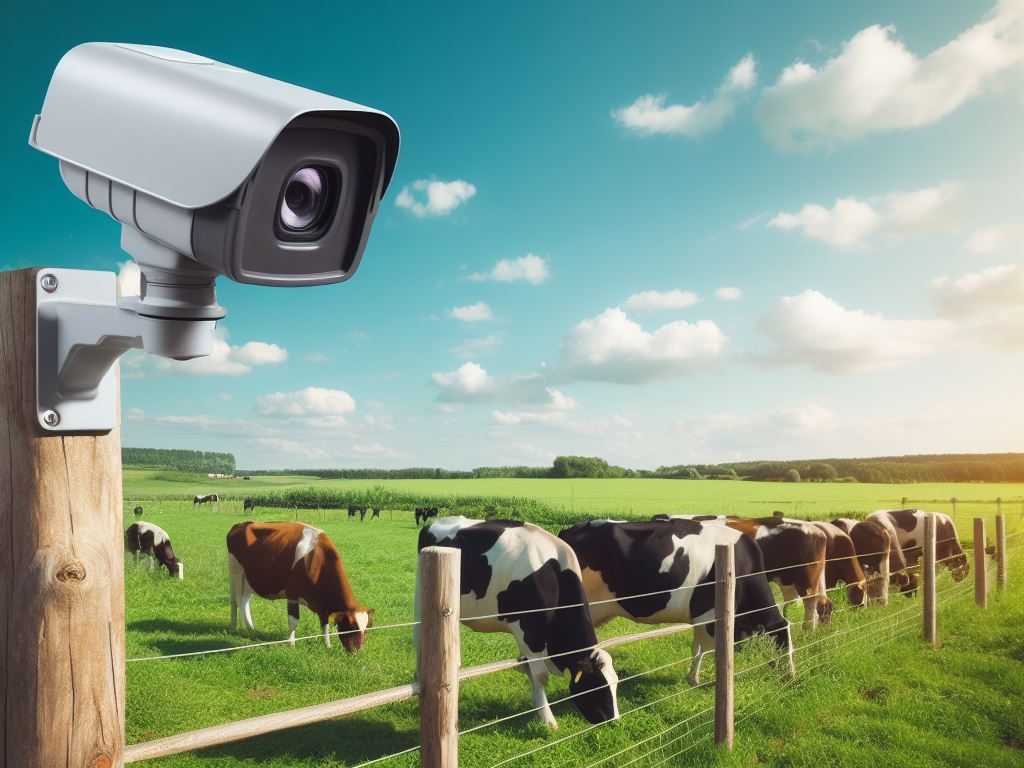
Selecting the Perfect Farm Surveillance Cameras: The security of your farm is paramount, and investing in the right surveillance cameras can make all the difference. So, how does one navigate through the myriad of options available in the market to find the perfect fit for their farm? First off, consider your specific needs. If your farm is expansive, a camera with a wide field of view would be ideal.
On the other hand, if you need to monitor specific areas such as barns or coops closely, a camera with high-resolution capabilities would be more suitable. Secondly, consider the durability of the camera. Farms are often subjected to harsh weather conditions, and as such, the chosen surveillance cameras should be robust and weather-resistant.
Lastly, ease of installation and integration with existing systems is crucial. A complex setup may not only be time-consuming but also leave room for errors. Integrated systems, on the other hand, allow for real-time monitoring and quick response to any incidents.
Choosing the right farm surveillance cameras may seem like a daunting task, but with these pointers, you’re well on your way to making an informed decision. After all, the safety and security of your farm are worth every penny spent.
Indoor vs Outdoor Cameras
When it comes to farm surveillance cameras, one may ponder over the choice between indoor and outdoor cameras. While indoor cameras are adept at monitoring the inside of your barns or sheds, they might not endure harsh weather conditions. On the flip side, outdoor cameras are designed to withstand extreme weather conditions and provide broader coverage, making them ideal for monitoring wide farm areas.
However, the choice between indoor and outdoor cameras ultimately hinges on your specific surveillance needs and priorities. So, the key to efficient farm surveillance is striking a balance between these two types of cameras.
Wired vs Wireless Cameras
When it comes to securing your agricultural property, farm surveillance cameras are a must. But the real question is, should you go wired or wireless? Wired cameras provide consistent, high-quality footage and are less susceptible to signal interference, making them a reliable choice. On the flip side, wireless cameras offer flexibility with easy installation and remote monitoring capabilities.
However, they can fall prey to signal disruptions. Your choice ultimately boils down to your farm’s specific needs. So, whether you’re a traditionalist favoring wired stability or a modern farmer seeking wireless convenience, there’s a surveillance solution out there for you.
Resolution and Night Vision
Farm surveillance cameras have revolutionized rural security, ensuring your livestock and property are protected around the clock. An essential aspect to consider is the resolution and night vision capabilities of these devices. High-resolution cameras offer crisp, clear images, making it easier to identify trespassers or potential threats.
Meanwhile, night vision functionality is critical as it enables uninterrupted surveillance, regardless of the time of day or light conditions. So, let’s shine a light on the dark corners of farm security with state-of-the-art farm surveillance cameras that offer both superb resolution and superior night vision.
Installation Tips & Tricks
Mastering the Art of Installing Farm Surveillance Cameras The installation of farm surveillance cameras isn’t a Herculean task, but it does require a strategic approach. These technological watchdogs play a vital role in deterring intruders, safeguarding valuable equipment, and even monitoring livestock. But, to maximize their potential, it’s essential to know some tips and tricks about their installation.
Firstly, the height and location of the cameras are crucial. Keep them at a place that covers a broad area, but also remains out of reach from potential vandals or curious animals. Next, ensure the cameras are weatherproof to withstand harsh farm conditions.
Lighting is another factor to consider. While many farm surveillance cameras come with night vision, installing them in well-lit areas can enhance the quality of recorded footage. Moreover, regularly check for obstructions like overgrown vegetation that can impede the camera’s view.
Consider the power source for your cameras. Wired cameras ensure continuous power supply, but the cables can be susceptible to damage. Wireless cameras, on the other hand, offer more flexibility in terms of placement but may require frequent battery changes.
Lastly, don’t overlook the importance of regular maintenance. Keep the cameras clean and free from dust, spider webs, or other debris that can affect their performance. Remember, the effectiveness of your farm surveillance cameras largely depends on their installation.
So, plan wisely and reap the benefits of a safe and secure farmstead.
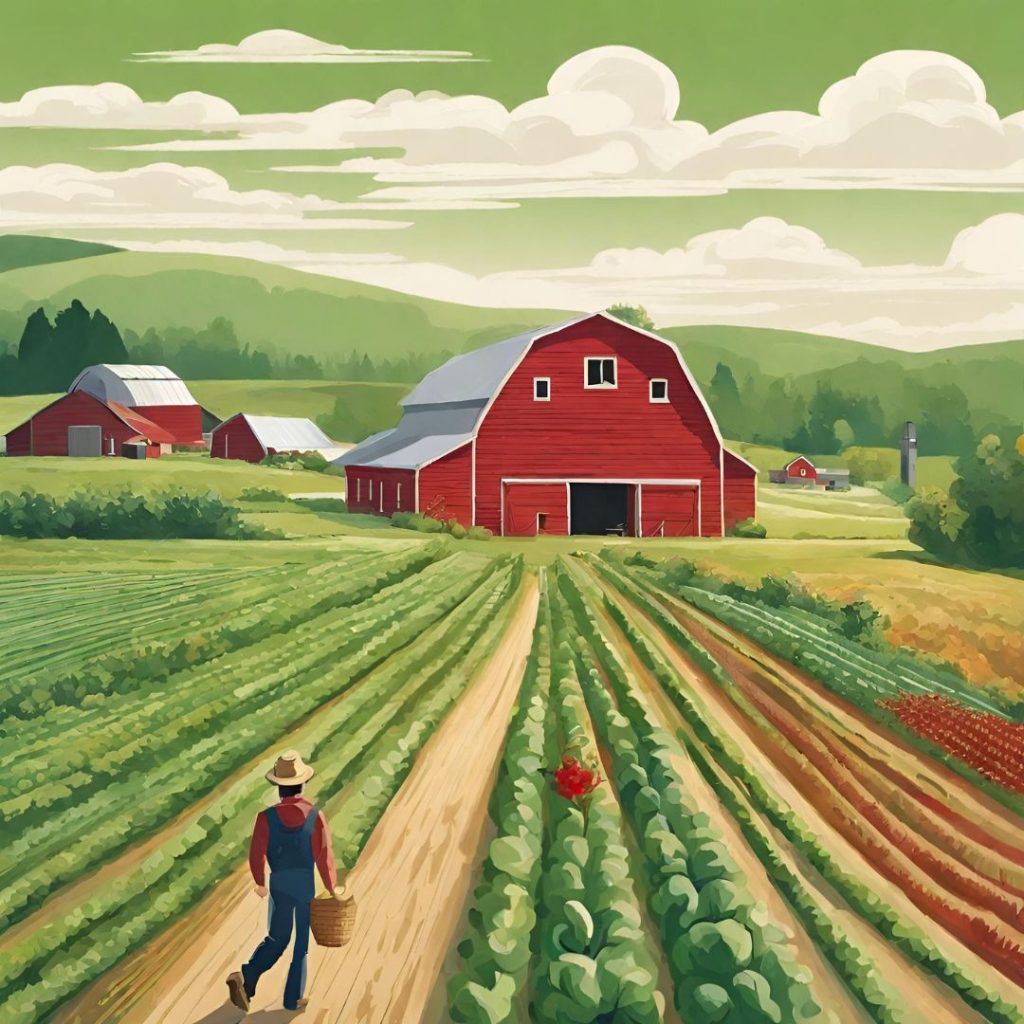
Ideal Camera Placement
In the quest for optimal farm security, the placement of your farm surveillance cameras is crucial. It’s not just about slapping cameras on barn doors and hoping for the best. The perfect camera positioning ensures that every corner of your farm is under vigilant surveillance, guaranteeing the safety of your livestock, crops, and equipment.
It’s a meticulous art, slightly akin to chess– every move must be calculated for maximum coverage. So, if you’ve ever found yourself wondering where to install these watchful eyes, this blog section is your ultimate guide – a masterclass in strategic camera deployment.
Maintaining Your Cameras
“Capturing every move on your farmstead is no small feat, and it’s the ‘behind-the-scenes’ heroes – your farm surveillance cameras – that make this possible. But these tireless sentinels need care too. Regular upkeep and maintenance of your cameras ensure that they function optimally, capturing crystal clear images and keeping your farm secure.
Whether it’s battling dust, braving the elements, or evading pesky critters, your cameras need to be in top form. So, don’t just install and forget. Make camera maintenance a part of your routine farm chores, because a well-maintained camera is the secret to a well-guarded fa
Review of Top Farm Surveillance Cameras
In the rapidly evolving world of agriculture, the safety and security of your farm cannot be overemphasized. Gone are the days when a simple lock and key were enough to keep your farm secure. With the rise in technology, farm surveillance cameras have become an integral part of farm security systems.
The ability to remotely monitor your farm, livestock, and agricultural equipment provides not just peace of mind, but also practical ways to enhance operational efficiency. In this review, we will delve into some of the top farm surveillance cameras on the market. Each model has been evaluated for its durability, image quality, ease of use, and, of course, cost-effectiveness.
From trail cameras that can capture wildlife incursions to high-definition cameras that can monitor your barns and fields in real-time, we have covered a wide spectrum of options. Remember, an investment in a good farm surveillance camera is an investment in the safety and productivity of your farm. So, buckle up and join us as we navigate through the world of farm surveillance cameras, helping you identify the perfect match for your unique farming needs.
Frequently Asked Question
What are the benefits of installing farm surveillance cameras?
Farm surveillance cameras provide numerous benefits, including protection against theft or vandalism, monitoring livestock or crops, and providing evidence for insurance claims. They can also help farmers monitor the daily operations and efficiency of their farms.
How do farm surveillance cameras work?
Farm surveillance cameras work by recording and transmitting footage in real time or for later review. They can be positioned strategically around the farm to monitor specific areas like barns, fields, or entrances. Some advanced models can also provide night vision, motion detection, or weatherproof features.
Are farm surveillance cameras difficult to install and maintain?
The complexity of installing and maintaining farm surveillance cameras can vary depending on the model and the size of your farm. Some cameras are simple to install and require minimal maintenance, while others may require professional installation and regular check-ups. Always refer to the manufacturer’s guidelines for specific instructions.
Is it expensive to set up a farm surveillance camera system?
The cost of a farm surveillance camera system can vary greatly depending on the size of the system, the number of cameras, the quality of the cameras, and any additional features. However, many farmers consider it a worthwhile investment for the increased security and efficiency it can bring to their operations.
Can farm surveillance cameras withstand outdoor conditions?
Yes, most farm surveillance cameras are designed to withstand outdoor conditions. They are typically weatherproof and can operate in a range of temperatures. However, it’s important to check the specifications of each model to ensure it fits your farm’s environment.
Can I monitor the footage from my farm surveillance cameras remotely?
Yes, many modern farm surveillance cameras offer the ability to remotely monitor the footage using a computer, smartphone, or tablet. This allows farmers to keep an eye on their property and livestock from anywhere, at any time.
Conclusion
Farm surveillance cameras are not just for the eyes in the skies, and they are indeed the unsung heroes in overalls. They serve as diligent scarecrows during the day and wise owls during the night. Armed with their ceaseless vigilance, they ensure that no intruder, be it human or animal, can sneak past undetected.
In the vast expanses of rural landscapes, these silent sentinels are the ever-watchful guardians, making farming not just about raising crops and livestock but also about raising security and peace of mind. So, remember, while farmers may sow the seeds, it’s the surveillance cameras that help reap the peace.
-
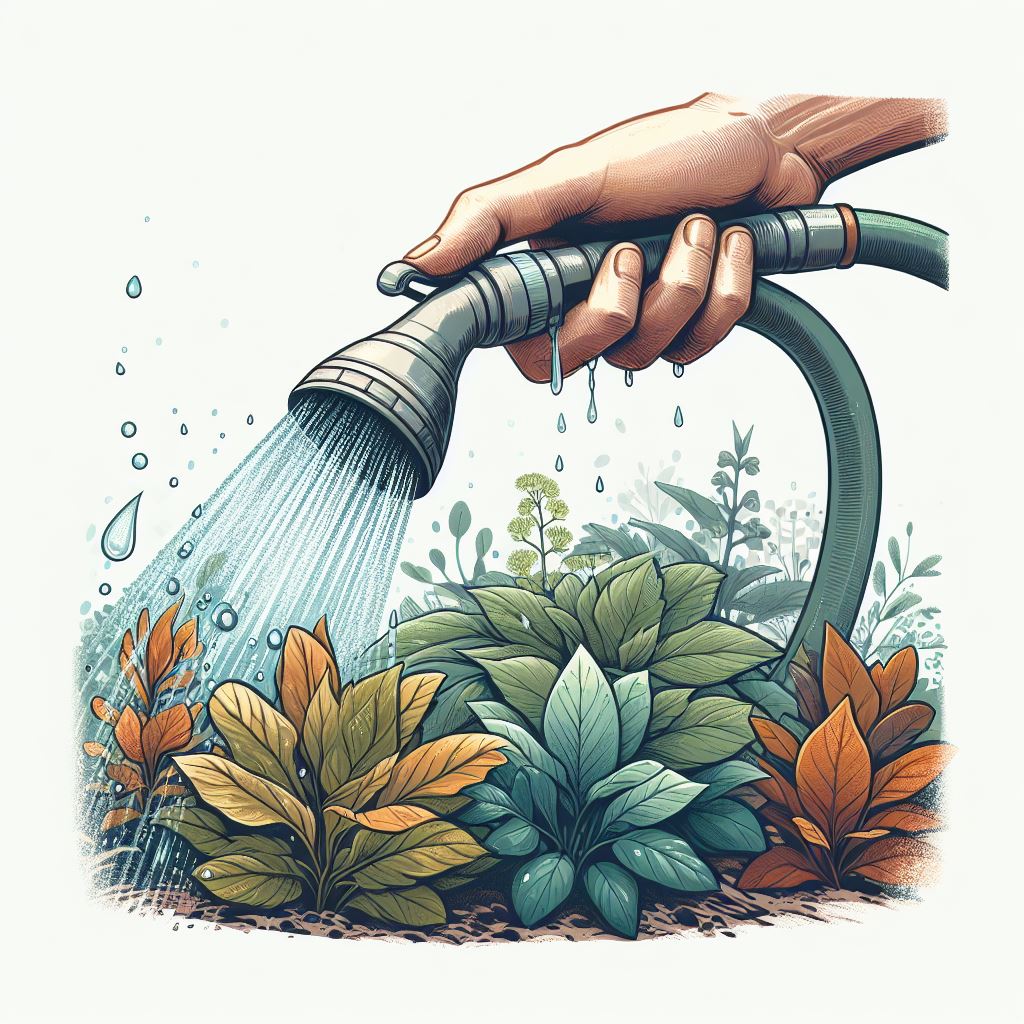
Maximizing Plant Health: A Comprehensive Guide to Seasonal Watering Adjusters
Keeping your garden lush and green all year round doesn’t have to feel like a Herculean task. With the right resources and tools, you can easily maintain the perfect balance of water for your plants, regardless of the season. That’s why today, we’ve got something special for you – A comprehensive guide on seasonal watering adjusters.
This guide is designed to empower you with expert tips, practical advice, and actionable strategies that will revolutionize your gardening experience. Whether you’re a novice gardener or a seasoned horticulturist, our Seasonal Watering Adjusters Guide is sure to become your go-to resource for efficient and effective garden watering. Take a step forward in your gardening journey, and let’s dive into the world of seasonal watering adjusters.
Understanding Seasonal Watering

Section Title: Deciphering the Mystique of Seasonal Watering: A Close Look at Seasonal Watering Adjusters As the seasons gracefully transition, the demands of your garden or lawn seamlessly shift as well—necessitating a change in your watering routine. Enter seasonal watering adjusters, the unsung heroes of an efficient irrigation system. These ingenious devices are designed to automatically modify the watering schedule based on the specific season, effectively ensuring that your plants receive the optimal amount of hydration all year round.
Far from being a mere luxury, seasonal watering adjusters are an essential tool for any green-thumbed individual or professional landscaper. They not only promote a healthy and vibrant garden but also contribute to water conservation. Seasonal watering adjusters take into account a myriad of factors, such as temperature, rainfall, and even the type of plant life in your garden.
The result? A customized watering plan that matches the distinct needs of your garden in every season. Whether it’s the blooming vitality of spring or the icy chill of winter, these adjusters are designed to adapt, ensuring your plants thrive in every weather condition. So why not take the guesswork out of watering and let technology do the heavy lifting? Seasonal watering adjusters are a smart investment that guarantees a lush, verdant garden and a clear conscience, knowing you’re contributing to water conservation.
A clever solution, indeed, for those seeking to marry technology and nature in perfect harmony.
What is Seasonal Watering?
Seasonal watering adjusters are intuitive devices that optimize water usage based on various seasonal changes. They are designed to adjust the amount of water used for landscapes and gardens depending on the particular season. This intelligent watering method, known as seasonal watering, ensures that your green spaces receive the right amount of moisture throughout the year.
It saves water during the rainy seasons and provides ample hydration during dry periods. Seasonal watering adjusters are not just eco-friendly; they are also a cost-effective solution for maintaining the health and beauty of your landscapes. Now that’s smart gardening!
Importance of Seasonal Watering
Seasonal watering adjusters are crucial tools for maintaining a healthy landscape. As the seasons shift, so do the watering needs of plants. Over-watering or under-watering can significantly impact their growth and survival.
Seasonal watering adjusters provide a clever solution to this challenge, allowing you to adapt your watering schedule based on the specific needs of the season. This ensures your plants receive the right amount of water all year round. With a touch of wit, we could say these devices are like personal assistants for your plants, ensuring they’re always perfectly ‘hydrated’ regardless of the season.
Introduction to Watering Adjusters
As we navigate the changing seasons, our gardens and landscapes require varying amounts of water to thrive. Here’s where seasonal watering adjusters come into play. These handy devices are not just another modern-day piece of technology but rather a gardener’s best ally in maintaining a healthy and vibrant garden throughout the year.
Seasonal watering adjusters, as the name suggests, adjust the watering schedule of your plants based on the current season. They’re like having a personal assistant for your garden, diligently making sure each plant gets the right amount of water depending on the time of the year. These adjusters work by considering various factors such as temperature, humidity, and daylight hours, which all change with the seasons.
The device then automatically tweaks the watering schedule, ensuring that your plants get just the right amount of water they need to flourish. In essence, seasonal watering adjusters take the guesswork out of gardening. They save time, conserve water, and most importantly, keep your plants healthy and happy.
So, whether you’re a seasoned gardener or a green-thumbed newbie, seasonal watering adjusters are a smart investment for any gardening enthusiast. They’re a simple yet effective way to navigate through the ever-changing needs of your garden, one season at a time. So, as we embrace each new season, let’s also embrace the technology that helps our gardens adjust to them.
After all, a well-watered garden is a happy garden, and a happy garden makes for a happy gardener.
Understanding Watering Adjusters
Seasonal watering adjusters, also known as watering adjusters, are smart irrigation tools designed to optimize your watering schedule based on the prevailing weather conditions. These ingenious devices work by adjusting the amount of water needed for your plants, lawn or garden in response to seasonal changes. They take into account factors such as temperature, rainfall, and evaporation rates, preventing water wastage during cooler months and ensuring adequate hydration during warmer periods.
In essence, seasonal watering adjusters transform your garden maintenance tasks into an intelligent, efficient and eco-friendly routine. So, embrace the ingenious charm of seasonal watering adjusters and let nature and technology harmoniously coexist in your backyard.

Types of Watering Adjusters
Seasonal watering adjusters are a gardener’s best friend, intelligently modulating your irrigation system in response to changing weather conditions. There are several types to consider. Weather-based adjusters utilize local weather data to optimize watering schedules, while soil moisture sensor adjusters rely on real-time soil moisture levels.
Solar sync adjusters consider sunlight and temperature to determine watering needs. Lastly, rain sensor adjusters pause watering in response to rainfall. Each type brings a unique blend of precision and convenience, ensuring your garden gets the right amount of water, no matter the season.
Truly, these devices are a testament to the marriage of technology and nature.
Benefits of Watering Adjusters
Seasonal watering adjusters are smart gardening tools that adapt your irrigation schedule according to the changing seasons. They ensure optimal water usage, leading to healthier plants and significant savings on your water bill. These clever devices are particularly beneficial in areas with diverse climate changes, making sure your garden receives the right amount of hydration, whether it’s a scorching summer or a frigid winter.
Embrace the benefits of seasonal watering adjusters and let them handle the tricky task of adjusting your watering schedule while you enjoy a thriving, water-efficient garden all year round.
Using Seasonal Watering Adjusters

Harnessing the Power of Seasonal Watering Adjusters The nutrient-rich lifeblood of any vibrant garden or lush lawn is water. However, finding the perfect balance between overwatering and underwatering can seem like an elusive pursuit. This is where seasonal watering adjusters step into the spotlight and take a bow.
These smart devices are the unsung heroes of gardening and lawn care, efficiently managing your watering regimen according to the changing seasons. Seasonal watering adjusters are designed to monitor weather conditions and adjust irrigation systems based on the actual needs of your plants. They factor in variables such as temperature, humidity, and rainfall to calculate the optimal amount of water your garden requires, ensuring it receives the perfect level of hydration throughout the year.
Gone are the days of guesswork and haphazard watering schedules. With these clever devices, your garden can thrive in all seasons, and you can conserve water, saving both the environment and your wallet. Not only will your plants thank you, but you will also have more time to enjoy the fruits (or flowers) of your labor.
So, if you’re keen to elevate your gardening game, it’s time to embrace the power of seasonal watering adjusters. These ingenious devices are more than just a convenience; they’re an investment in the health and beauty of your garden. This isn’t just smart gardening; it’s gardening at its finest.
Setting Up Watering Adjusters
Incorporating seasonal watering adjusters into your irrigation system is a clever move for any discerning gardener or landscaper. These ingenious devices provide an optimal balance of moisture for your plants, adjusting water flow according to seasonal needs. From the scorching heat of summer to the chill of winter, seasonal watering adjusters ensure your plants are neither parched nor waterlogged.
Setting up these devices is a breeze, a simple yet effective way to keep your garden lush and vibrant all year round. So, let’s delve into the witty world of watering adjusters, your garden’s secret weapon against seasonal swings.
Adjusting Watering Based on Seasons
As garden enthusiasts, we understand the importance of adjusting watering habits to suit the rhythm of the seasons. Just as we swap out our wardrobes to accommodate the weather, our plants also require a change in their hydration routine. Enter seasonal watering adjusters – the clever tool that enables us to adapt our watering practices according to the time of year.
These handy devices consider factors like temperature, humidity, and precipitation to ensure our precious plants receive just the right amount of hydration. So, let’s delve deeper into the world of seasonal watering adjusters and give our plants the tailored care they deserve.
Maintaining Watering Adjusters
Maintaining Seasonal Watering Adjusters: A Green Thumb’s Guide As we enthusiastically get our hands dirty in the garden, we often overlook the importance of maintaining our gardening tools – especially our seasonal watering adjusters. These unsung heroes of the horticultural world play a crucial role in keeping our green spaces lush and vibrant throughout changing seasons. Seasonal watering adjusters are designed to modulate water supply according to the seasonal needs of your plants.
They reduce water wastage and ensure that your plants are well-hydrated, no matter the weather. However, like any other piece of equipment, they, too, require regular upkeep to function optimally. Maintenance of these devices is not rocket science.
It involves regular cleaning to prevent blockages, timely replacement of worn-out parts, and periodic checks to ensure that the adjuster is correctly calibrated according to the season. Remember, a well-maintained watering adjuster is akin to a well-oiled machine, ensuring your garden thrives in all seasons. It might seem like a trivial task, but proper maintenance of your seasonal watering adjusters can truly make a difference in your garden’s health.
It’s akin to the conductor of an orchestra, subtly guiding the performance without drawing attention to itself. So, let’s give these silent maestros of our gardens the care they deserve. In conclusion, maintaining your seasonal watering adjusters is not merely a chore, but a necessary act of love towards your plants.
They might be silent and unassuming, but their role in creating your garden’s symphony is undeniable. So, roll up your sleeves, get your hands dirty, and give your watering adjusters the attention they warrant. After all, a little care goes a long way in preserving the verdant charm of your garden.
Frequently Asked Questions (FAQs)
What are seasonal watering adjusters?
Seasonal watering adjusters, also known as seasonal adjustment, is a feature available in most modern irrigation systems that allows the system to automatically adjust the amount of water used based on the time of year and the needs of the plants being watered.
How do seasonal watering adjusters work?
Seasonal watering adjusters work by considering the current season and environmental conditions. In dry seasons or hot climates, the adjuster increases the amount of water, while in wet seasons or cool climates, it reduces the water usage. This ensures the plants receive the necessary amount of water all year round.
What are the benefits of using seasonal watering adjusters?
Seasonal watering adjusters help save water by preventing overwatering or underwatering, which is beneficial for the environment and can significantly reduce water bills. Also, it ensures optimal watering for plants, leading to healthier and more vibrant landscapes.
Can I manually control the seasonal watering adjusters?
Yes, most irrigation systems with seasonal watering adjusters allow manual controls. If you believe the system is overwatering or underwatering, you can manually adjust the settings according to your preferences and conditions.
Are seasonal watering adjusters difficult to install?
The difficulty of installing a seasonal watering adjuster depends on the type of irrigation system you have. Some modern systems come with built-in adjusters, while others may require a professional to install. Always refer to the manufacturer’s instructions or consult with a professional for installation.
How do I know if my irrigation system has a seasonal watering adjuster?
You can check the product manual or contact the manufacturer to determine if your irrigation system includes a seasonal watering adjuster. If it doesn’t, you can often purchase one separately and have it installed.
Conclusion
Seasonal watering adjusters are the unsung heroes of efficient gardening. They not only ensure your plants receive the right amount of water relative to the season but also help conserve water in the process. Think of them as your garden’s weather forecasters, always adjusting to the rhythms of Mother Nature.
They’re the Sherlock Holmes of horticulture, always deducing the precise amount of hydration needed for the season. So, upgrade your garden with these clever devices, and let them think while your plants do the drinking.
-
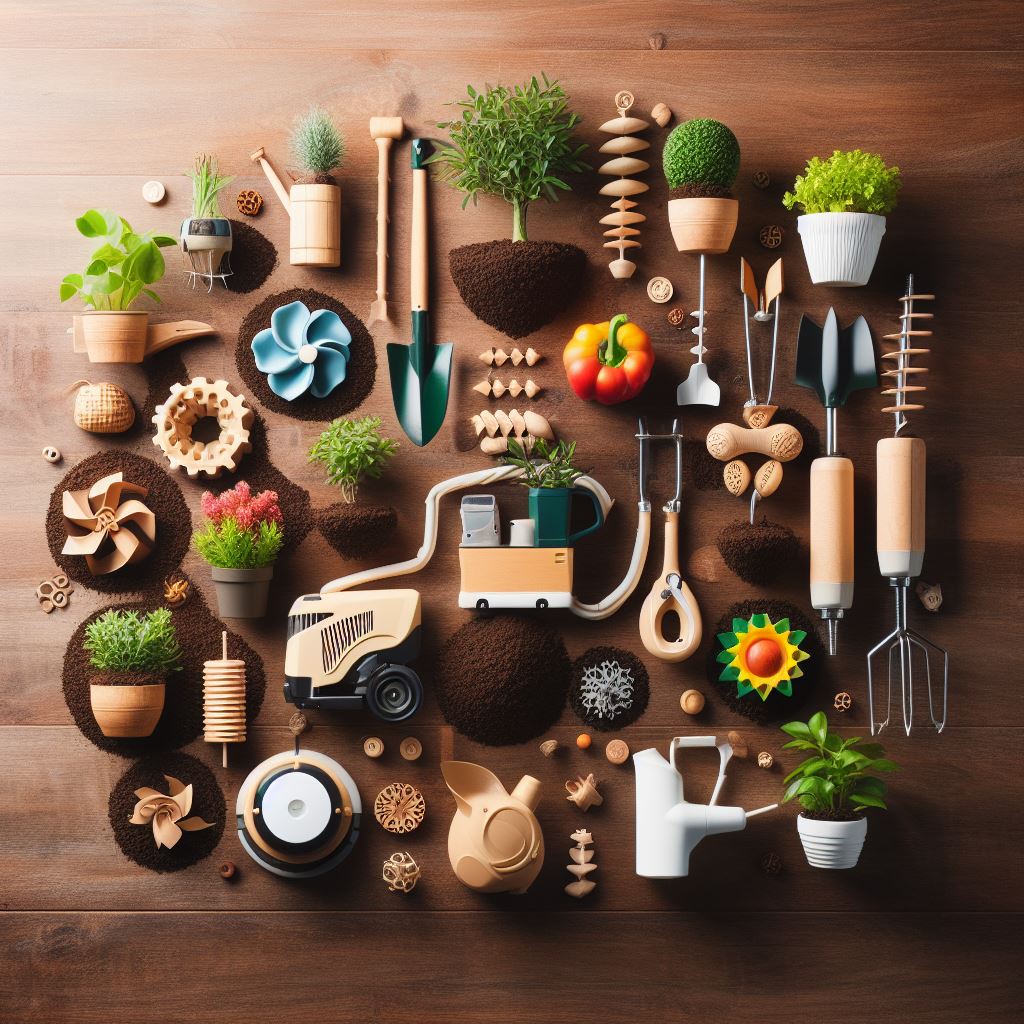
The Ultimate Guide to Soil Aeration Devices for Your Garden
In the world of gardening and landscaping, the health and vitality of your soil is paramount to the success of your plants. However, the critical factor often overlooked is soil aeration – the process that allows air to circulate freely throughout the soil, enhancing its overall health and productivity. In this blog, we delve deep into the world of soil aeration devices, a lesser-known but incredibly potent tool in the arsenal of any serious gardener or landscaper.
We will explore the different types of soil aeration devices available in the market, their benefits, and how to use them effectively. Whether you’re a seasoned green thumb or a budding gardener, this comprehensive guide will provide the knowledge you need to maximize the potential of your soil and, ultimately, your garden.
Table of Contents
Understanding Soil Aeration
Demystifying Soil Aeration: An In-depth Look at Soil Aeration Devices In the realm of gardening and horticulture, soil aeration stands out as one of the most vital practices that support the healthy growth of plants. It’s akin to us humans breathing in fresh air – refreshing, essential, and life-sustaining. But how exactly do we deliver this breath of life to our beloved green friends? The answer lies in the use of soil aeration devices.
Soil aeration devices are the unsung heroes of your garden. They delve deep into the earth, creating spaces for air to circulate, enhancing nutrient absorption, and promoting root growth. They are the proverbial knights in shining armor, rescuing your plants from the clutches of compacted soil and waterlogging.
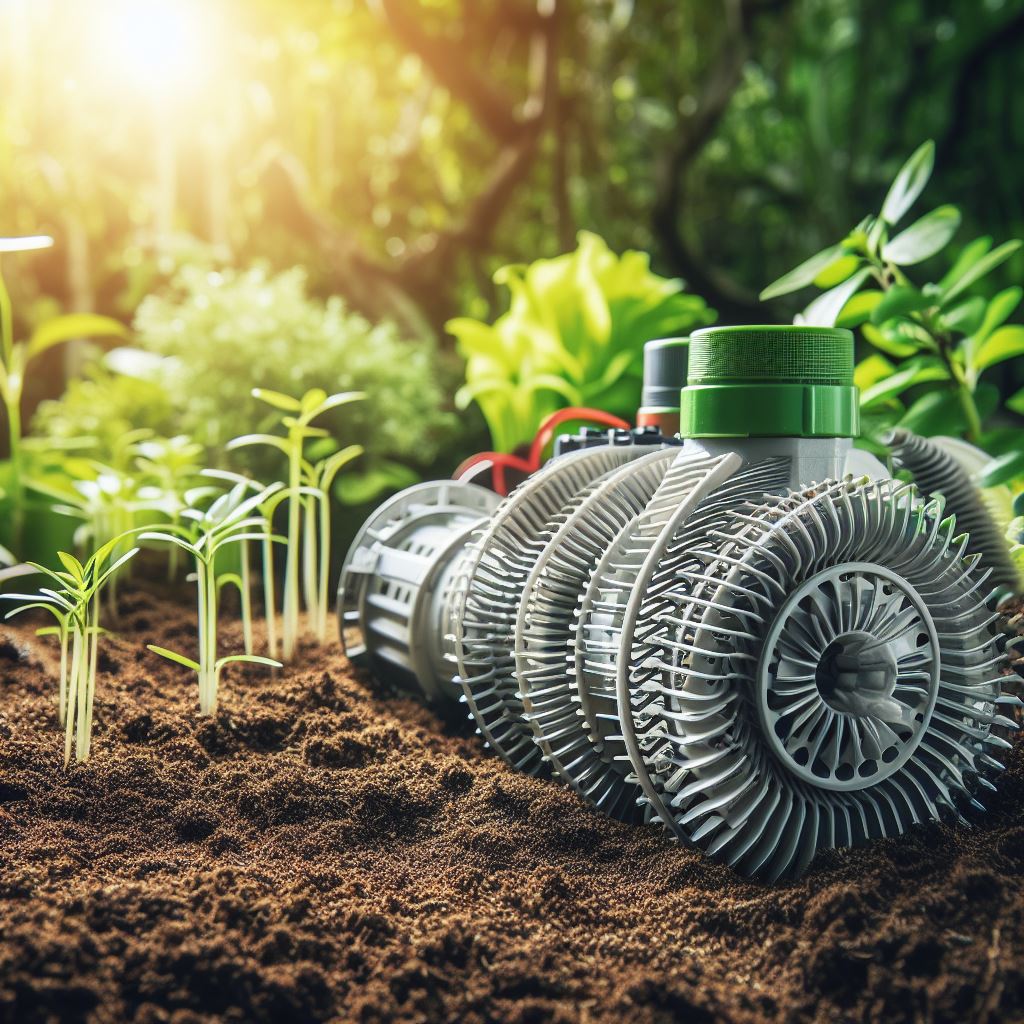
These devices come in a plethora of shapes and sizes, from handheld aerators for your potted plants to larger, mechanized versions for your backyard or farm. With a soil aeration device in your gardening arsenal, you’re not just poking holes in the ground; you’re paving the way for a healthier and more vibrant garden. Whether you’re a veteran green thumb or a novice gardener, understanding the importance of soil aeration and the role of soil aeration devices is key to unlocking the full potential of your plants.
Why Soil Aeration Matters
Soil aeration devices – the unsung heroes of a thriving garden! These handy tools play a crucial role in maintaining the health of your soil, an aspect often overlooked by many gardening enthusiasts. The science is simple – soil aeration devices create pockets of space in the soil, allowing roots to breathe, absorb nutrients, and grow. This process also promotes water drainage and encourages healthy soil microorganism activity.
These factors collectively contribute to robust plant growth. So, before you lavish attention on your plants, remember – it’s what’s beneath that truly counts!
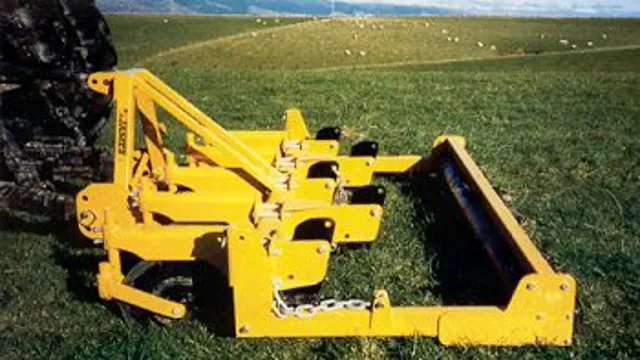
Natural vs. Manual Aeration
In the world of gardening, the debate between natural and manual aeration is a hot topic, with each method having its own set of benefits. Natural aeration relies on the activities of earthworms and other soil-dwelling creatures to create air pockets, improving soil health and plant growth. On the other hand, manual aeration requires the use of soil aeration devices, offering immediate results and control over the process.
Both methods have their merits, so your choice ultimately depends on your gardening needs and preferences. So, let’s delve into the world of aeration and unearth the best method for your garden.
Types of Soil Aeration Devices
Unearthing the Secrets of Soil Aeration Devices Soil aeration, a lesser-known hero in the gardening world, often goes unnoticed. Yet, the magic it can weave in your garden is undeniable. Soil aeration devices are the secret tools behind this magic.
They come in different forms, each designed with a specific purpose, and they all share the common objective of improving your soil’s health and your plants’ happiness. One of the most common soil aeration devices you might come across is the spike aerator. This tool, with its spike-like protrusions, acts as a mini acupuncture therapist for your soil, penetrating its surface to allow water, nutrients, and air to reach the roots.
The core aerator is another powerful tool in the arsenal. Unlike the spike aerator, the core aerator removes small plugs of soil and thatch from the lawn, creating open pockets for better nutrient absorption and root growth. Then, there’s the slicing aerator, which slices through the soil with rotating blades.
It is gentle on your lawn, causing less stress to the grass while still promoting improved air and nutrient circulation. Let’s not forget about the liquid soil aerator, a non-mechanical alternative. This solution seeps into the soil, breaking down hard compacted soil, improving its structure, and promoting healthier root systems.
Each of these soil aeration devices has its unique strengths, but they all share a common goal: to keep your soil healthy and your plants thriving. Choosing the right one for your garden depends on your specific needs, soil condition, and the level of care you’re willing to invest. So, dig a little deeper, and you’re bound to find the perfect soil aeration device that will elevate your gardening game to new heights.
Spike Aerators
Spike aerators are innovative soil aeration devices designed for the discerning gardener. They are an essential tool in creating lush, healthy lawns. These devices work by puncturing the soil, allowing oxygen, water, and vital nutrients to penetrate the grass roots more efficiently.
The result? A vibrant and thriving green space that becomes the envy of your neighborhood. Spike aerators are not just a garden tool; they are the secret weapon in your gardening arsenal. Remember, the secret to a beautiful lawn is not just what you see on the surface but what happens beneath it.
Plug Aerators
“In the world of lawn care, plug aerators are the unsung heroes. These soil aeration devices penetrate the ground, removing small plugs of soil to allow water, nutrients, and air to reach the roots of your lawn. Often overlooked, they are the silent garden warriors that combat soil compaction, promoting healthier and lusher growth.
So, if you’re in pursuit of that ever-elusive perfect lawn, it’s time to sing praises for plug aerators – the secret weapon in your gardening arsenal. Because at the end of the day, a breath of fresh air is as good for your lawn as it is for you.”
Liquid Aerators
Delving into the world of horticulture, one cannot overlook the significance of soil aeration devices, particularly liquid aerators. Exquisitely designed to alleviate soil compaction, these devices promise to revolutionize gardening practices. They function by permeating the soil, breaking down the dense particles, and facilitating the smooth flow of nutrients, thus enhancing plant health.
Liquid aerators are the unsung heroes in the gardening world, silently creating an ideal environment for plant growth. They are a testament to the fact that sometimes, the best things come in small, unassuming packages. Let’s uncover the fascinating world of these ingenious devices.
Choosing Your Aeration Device
Soil Aeration Devices: A Buyer’s Guide To Healthy Soil Healthy soil is the foundation of any thriving garden. It plays an integral role in plant growth by providing nutrients and a good structure for roots to grow. However, soil can often become compacted and hard, making it difficult for roots to penetrate and access nutrients.
This is where soil aeration devices come into the picture. Choosing the right soil aeration device can be a game-changer for your garden. These handy tools are designed to break up compacted soil, improve its structure, and promote root growth.
They come in various shapes and sizes, each with its unique benefits and limitations. The key is to choose the one that best suits your soil type and gardening needs. Manual coring aerators, for instance, are great for small gardens or lawns.
They are inexpensive and easy to use but can be time-consuming for larger areas. Powered aerators, on the other hand, are more efficient and can cover large areas quickly. However, they can be more expensive and require some degree of technical know-how.
Another popular option is spike aerators. These devices create holes in the soil, allowing water, nutrients, and air to penetrate the root zone. They are easy to handle and perfect for home gardeners looking to improve their soil’s health.
The choice of soil aeration devices ultimately depends on your garden’s size, your budget, and the type of soil you have. But regardless of the choice, one thing is certain: using a soil aeration device is a step towards healthier, more productive soil. So, get ready to roll up your sleeves and breathe some life back into your garden’s soil!
Considerations for Purchase
In the realm of gardening and landscaping, soil aeration devices have become pivotal tools. These devices are key to maintaining healthy soil, promoting plant growth, and ensuring a vibrant, lush garden. However, before making a purchase, it’s important to consider some factors carefully.
The type of soil, the size of your garden or lawn, the frequency of aeration required, and your budget are all essential considerations. Remember, the right soil aeration device can transform your gardening experience, turning a laborious chore into an enjoyable, fulfilling activity. So choose wisely, and let your garden thrive.
Popular Aeration Device Brands
In the world of landscaping and gardening, soil aeration devices have become an essential tool for maintaining healthy and vibrant green spaces. Among the plethora of brands in this sector, certain names stand out for their quality and innovation. Brands such as Agri-Fab, Brinly, Yard Butler, and Craftsman have secured their place in the market with products that effectively penetrate the soil, improving its breathability and overall health.
These brands have masterly combined technology and design, delivering devices that are user-friendly and efficient, ensuring your soil gets the royal treatment it deserves.
Usage and Maintenance Tips
Caring for your garden demands a tactical approach, a bit like handling a complex chess game. Among the plethora of tools in your gardening arsenal, soil aeration devices are the knights, boldly charging forth to breathe life into your garden’s soil. These unsung heroes work their magic by creating small holes in the soil, allowing air, water, and nutrients to penetrate the grassroots.
This aids in the growth of stronger and healthier plants. However, like your favorite pair of gardening gloves, soil aeration devices require a certain level of care and maintenance to keep them in tip-top shape. So, how can you ensure that your soil aeration device remains your garden’s gallant knight for years to come? Firstly, clean your soil aeration device after each use to prevent dirt and debris from clogging the tines.
This might seem like an arduous task, but a quick rinse and scrub can work wonders for the longevity of your device. Secondly, sharpen the tines regularly. You wouldn’t try to cut a tomato with a dull knife, would you? Similarly, an aerator with sharp tines can penetrate the soil more efficiently.
Lastly, store your equipment in a dry place. While soil aeration devices are designed to interact with soil and water, prolonged exposure to moisture can lead to rusting. In conclusion, soil aeration devices are an essential tool for any green-thumbed enthusiast.
With regular cleaning, sharpening, and proper storage, your aerator will continue to serve your garden effectively, helping your plants to thrive and flourish. Now, isn’t that a ‘whole’ lot of sense?
Frequently Asked Questions
What are soil aeration devices?
Soil aeration devices are tools or machines designed to penetrate the soil and create small holes to allow air, water, and nutrients to reach the roots of plants, promoting their health and growth.
Why is a soil aeration device necessary for gardening or farming?
Soil aeration devices are crucial as they help break up compacted soil, improve soil structure, enable better water and nutrient absorption, and promote root development. This leads to healthier and more productive plants.
What are the different types of soil aeration devices?
There are several types of soil aeration devices, including spike aerators, plug or core aerators, liquid aerators, and even manual hand aerators. The choice depends on the size of your lawn or garden and the specific needs of your soil.
How often should I use a soil aeration device?
The frequency of using a soil aeration device depends on the type of soil and the specific needs of your garden or lawn. However, it is generally recommended to aerate your soil once or twice a year, preferably during the growing season.
Can using a soil aeration device damage my lawn or garden?
If used properly, soil aeration devices should not damage your lawn or garden. On the contrary, they can enhance the health and vitality of your plants. However, over-aeration can potentially dry out your soil and harm your plants.
Conclusion
Soil aeration devices might be the unsung heroes of the gardening world. They’re like the life-of-the-party guest who knows how to get the soil’s circulation going, encouraging a healthy exchange of gases, water, and nutrients. They’re not just poking holes for the fun of it; they’re creating underground highways for roots to thrive. In this way, these devices are the ultimate wingman for any plant, ensuring they have room to breathe and grow. So, if you want your garden to be more than just dirt deep, it’s time to let soil aeration devices take the lead. They’re more than just a gadget; they’re the breath of fresh air your garden didn’t know it needed.
-

Unlocking the Potential of Biochar Integration Systems
In the emerging world of sustainable agriculture, innovations are continually transforming the way we approach farming and food production. One such game-changing innovation is the Biochar Integration System. This revolutionary system, rooted in ancient practices yet adapted for the modern world, offers a range of environmental and agricultural benefits, from improving soil fertility to sequestering carbon.
In this article, we’re going to delve deep into the world of Biochar Integration Systems, exploring their potential to revolutionize the agricultural landscape and contribute to global sustainability goals. Prepare to uncover the transformative power of this unassuming, carbon-rich material and its potential to reshape our future.
Table of Contents
Understanding Biochar
Unraveling the Intricacies of Biochar Integration Systems is a fascinating and innovative approach to sustainable agriculture, offering an intriguing blend of science and sustainability. At its core, biochar is a carbon-rich material produced from organic waste through a process called pyrolysis. This sophisticated process involves heating the organic waste in a low-oxygen environment, effectively preventing complete combustion and transforming the waste into a stable form of carbon, i.e., biochar. Incorporating biochar into agricultural systems can offer a plethora of benefits.
It enhances soil fertility, boosts crop productivity, and mitigates climate change by sequestering carbon. In essence, biochar integration systems transform waste into a valuable resource, thereby creating a sustainable loop of waste management and resource conservation. But the magic of biochar doesn’t end with soil enrichment.
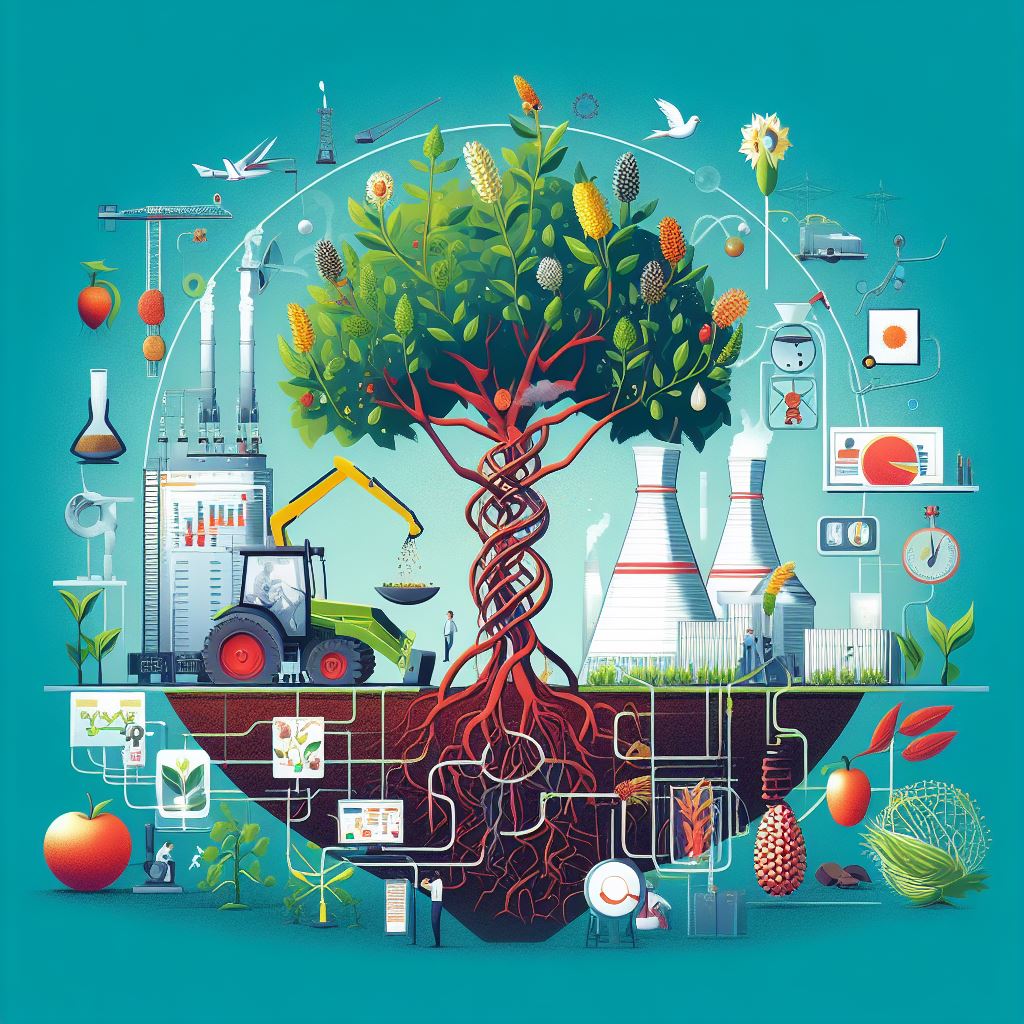
It also filters and retains nutrients in the soil, reducing the need for chemical fertilizers and promoting the growth of beneficial microorganisms. Furthermore, it can improve water retention in sandy soils and enhance the soil’s resilience to climate change-induced stress. While the science behind biochar integration systems may seem complex, the principle is quite simple.
It is a perfect illustration of how innovative solutions can transform waste into wealth, promoting sustainable and resilient agricultural practices. Understanding and embracing this ingenious approach is a pivotal step toward a more sustainable and resilient future.
Biochar: An Introduction
In the realm of sustainable agriculture, biochar integration systems have emerged as a game-changer. Biochar, a charcoal-like substance, is proving to be an eco-friendly solution for soil amendment and carbon sequestration. This product, derived from organic waste materials, is not only rich in carbon but also enhances soil fertility and stimulates plant growth.
Additionally, it serves as a long-term carbon sink, reducing greenhouse gas emissions. The incorporation of biochar into agricultural practices is a promising strategy, paving the way for a sustainable and productive future in farming. A witty yet clever solution to some pressing environmental concerns.
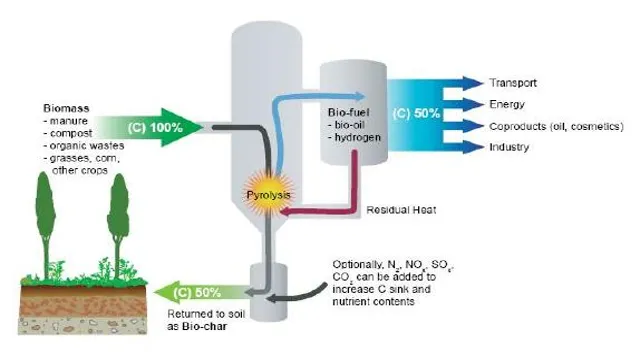
The Science Behind Biochar
Delving into the realm of sustainable agriculture, we unearth the pivotal role of biochar integration systems. This ingenious science hinges on the conversion of agricultural waste into a potent soil enhancer known as biochar. Intriguingly, this transformative process not only promotes plant growth but also stores carbon effectively, offering a promising solution to mitigate climate change.
Get ready for a captivating journey as we explore the scientific intricacies and remarkable benefits of biochar integration systems. This is a true testament to humanity’s ingenuity in harmonizing agricultural productivity and environmental conservation.
Biochar Integration System
Biochar Integration Systems: A Revolutionary Approach to Sustainable Agriculture In the world of modern, sustainable agriculture, Biochar Integration Systems have emerged as an innovative and eco-friendly solution. A biochar integration system is an agricultural practice that harnesses the power of biochar, a type of charcoal produced through the pyrolysis of biomass. These systems are designed to integrate biochar into various agricultural processes, creating a harmonious and sustainable cycle.
Biochar serves multiple functions in these systems. It not only improves soil fertility and crop yield but also aids in carbon sequestration, thus playing a crucial role in climate change mitigation. The beauty of biochar integration systems lies in their versatility.
They can be adapted to suit a variety of farming practices and environments, from large-scale commercial farms to small, subsistence-based operations. This adaptability, coupled with the numerous environmental benefits, makes biochar integration systems a promising tool in the quest for sustainable and resilient agricultural systems. However, the implementation of biochar integration systems is not without challenges.
It requires a proper understanding of biochar properties and their interaction with different soil types and crops. However, with ongoing research and technological advancements, these hurdles are being steadily overcome. In conclusion, biochar integration systems represent a revolutionary approach to sustainability in agriculture.
They offer a practical solution to some of the most pressing issues in agriculture, such as soil degradation and climate change. With further research and development, biochar integration systems have the potential to transform the future of farming, making it more sustainable, productive, and climate-friendly.
What is Biochar Integration?
Biochar integration systems are becoming increasingly popular as a sustainable solution for improving soil health and reducing carbon emissions. This ingenious approach involves the conversion of organic waste into biochar – a charcoal-like substance – which is then integrated into the soil. This process not only sequesters carbon, reducing greenhouse gas emissions but also enhances soil fertility and crop productivity.
If you’re picturing a win-win scenario for the environment and agriculture, you’re spot on! Biochar integration systems are indeed an eco-friendly innovation that marries science, sustainability, and soil health in a harmonious union.
Functions of Biochar Systems
Biochar integration systems serve as an innovative solution to modern agricultural challenges, performing a myriad of functions. These systems enhance soil fertility, reduce greenhouse gas emissions, and increase agricultural productivity. They do this by transforming organic waste into biochar, a type of charcoal that improves soil health.
This process not only aids in carbon sequestration but also contributes to waste management. Thus, biochar integration systems are a sustainable, effective, and clever answer to enhancing our agricultural practices while addressing environmental concerns. A witty solution indeed, turning waste into wealth while saving our planet!
Benefits of Biochar Systems
Biochar integration systems offer multiple benefits, transforming agricultural practices and environmental conservation simultaneously. This carbon-rich substance, derived from biomass, improves soil fertility and productivity, contributing to sustainable farming. Moreover, its ability to sequester carbon helps in mitigating climate change effects, while its water retention properties aid in drought resilience.
Notably, biochar systems can convert organic waste into a valuable resource, paving the way for a circular economy. Thus, integrating biochar systems can be a game-changer, promising a greener future with a healthier environment and enhanced agricultural yield.
Biochar System in Agriculture
The Evolution and Impact of Biochar Integration Systems in Modern Agriculture In the grand theater of modern agriculture, a new protagonist is emerging: biochar integration systems. This innovative approach to farming is not just a passing trend but a revolutionary method that holds the potential to transform the agricultural landscape drastically. Biochar, a charcoal-like substance produced from plant matter, is rapidly gaining attention in the agricultural sector.
Its integration into farming systems is seen as a promising solution to multiple agricultural challenges, from enhancing soil fertility to reducing greenhouse gas emissions. The magic of biochar lies in its unique properties. It is highly porous and has an exceptional ability to retain both water and nutrients, making it an excellent soil amendment.
When integrated into agricultural systems, biochar can improve the soil structure, boost crop productivity, and enhance the soil’s capacity to store carbon, thus mitigating climate change. Moreover, biochar integration systems offer a sustainable solution to waste management in agriculture. Instead of burning or discarding plant residues, which can contribute to environmental pollution, these materials can be converted into biochar and returned to the soil, creating a circular economy within the agricultural system.
However, it’s not all roses with biochar integration systems. Challenges, such as the high cost of biochar production and lack of knowledge on its long-term impacts, still need to be addressed. Nevertheless, the potential benefits of biochar for sustainable agriculture are too significant to ignore.
In conclusion, biochar integration systems represent an exciting frontier in agriculture. As research continues to unlock its potential, biochar may well prove to be the secret weapon for a more sustainable, productive, and resilient agricultural sector.
Role of Biochar in Soil Health
Biochar integration systems are instrumental in improving soil health. Biochar, a carbon-rich product derived from biomass, acts as a soil amendment, enhancing its fertility and productivity. It bolsters the soil’s ability to retain nutrients and water, reducing the need for chemical fertilizers.
Additionally, biochar aids in soil carbon sequestration, playing a vital role in mitigating climate change. In essence, the integration of biochar into our soils is a clever, sustainable solution that benefits not only our gardens and farms but also our planet.
Biochar and Crop Yield
In the pursuit of sustainable agriculture, biochar integration systems emerge as an ingenious solution. They present an intriguing paradox, as these systems are rooted in ancient practices yet are strikingly relevant in today’s green revolution. Biochar, a soil amendment produced from plant matter, is capturing the attention of agronomists and environmentalists alike for its promising impacts on crop yield.
This dark, nutrient-rich substance holds the potential to revolutionize farming practices and boost agricultural productivity while mitigating climate change. The integration of biochar into modern farming systems thus represents a fascinating convergence of tradition and innovation.
Environmental Impact of Biochar
The Environmental Implications of Biochar Integration Systems Biochar integration systems are making waves in the environmental field, presenting a potentially game-changing solution to some of our most pressing ecological issues. This system is based on biochar, a carbon-rich byproduct derived from the pyrolysis of organic materials. The use of biochar in agriculture can significantly reduce greenhouse gas emissions, improve soil health, and enhance crop productivity.
However, the environmental impact of biochar extends beyond the realm of agriculture. It can also play a crucial role in waste management, as it can transform organic waste into a valuable resource. Moreover, biochar has exceptional carbon sequestration capabilities, meaning it can effectively ‘lock away’ carbon for hundreds or even thousands of years, thus helping mitigate climate change.
Despite these benefits, it’s important to note that the successful implementation of biochar integration systems hinges on a number of factors. These include the feedstock used, the pyrolysis process, the application rate, and the specific environmental conditions of the area. As such, it’s essential to conduct comprehensive research and field trials to ensure that biochar use is both safe and beneficial for a given location.
Frequently Asked Questions
What are biochar integration systems?
Biochar integration systems refer to the process of incorporating biochar, a type of charcoal produced from plant matter, into various agricultural or environmental systems. This can enhance soil fertility, increase crop productivity, and help in carbon sequestration.
How does biochar integration work in agricultural systems?
Biochar integration in agricultural systems typically involves the addition of biochar into the soil. This not only improves the soil’s fertility and water retention properties but also reduces the emission of greenhouse gases. Biochar also provides a habitat for beneficial soil microorganisms, promoting healthier plant growth.
What are the benefits of using biochar integration systems?
Biochar integration systems offer numerous benefits, including enhancing soil fertility, increasing crop yield, reducing greenhouse gas emissions, and improving water quality. It also aids in waste management as biochar can be produced from a variety of organic wastes.
What are the potential drawbacks of biochar integration systems?
While biochar integration systems have many benefits, there are potential drawbacks. Biochar production requires energy and can contribute to air pollution if not properly managed. Also, the long-term effects of biochar application on soil health and biodiversity are not fully understood and require further research.
Is the use of biochar integration systems sustainable?
The use of biochar integration systems can be sustainable if managed properly. It can help sequester carbon, reducing greenhouse gas emissions. Additionally, biochar production can utilize waste materials, contributing to waste management solutions. However, the sustainability of these systems largely depends on the source of biomass and the production process.
Conclusion
The integration of biochar systems is not just a smart move; it’s a remarkably clever strategy for sustainable agriculture and environmental preservation. It’s like having a secret weapon hidden in plain sight, silently combating climate change by reducing greenhouse gas emissions and simultaneously enriching our soils. So, in essence, biochar is the James Bond of soil amendments – secret, efficient, and ingeniously beneficial to the world.
-

Exploring Essential Tools for Efficient Fish Harvesting
Among the many activities that bring us closer to nature’s heart, fish harvesting stands out as a relaxing yet exhilarating pursuit. It is an art that requires patience, skill, and the right equipment to ensure a successful harvest. For both novice and experienced anglers, understanding the essential fish harvesting tools can significantly improve fishing experiences, making them more efficient and enjoyable.
This blog will delve into the world of fish harvesting tools, exploring their usage, benefits, and tips on how to choose the best equipment. Whether you are gearing up for your first fishing adventure or looking to upgrade your existing fishing gear, this comprehensive guide will provide you with all the information you need. So, let’s dive right in and enhance your fishing skills with the right tools at your disposal.
Introduction to Fish Harvesting
Fish Harvesting: A Deep Dive into the Essential Tools of the Trade Fishing, an age-old practice, is not only a means of survival but also a form of recreation for many. The art of fish harvesting has evolved significantly over the centuries, with the advent of technology playing a significant role in this development. As such, one cannot discuss fish harvesting without shedding light on the various fish harvesting tools that make this activity possible.
The tools used in fish harvesting are as diverse as the fish species themselves, each designed with a specific purpose in mind. From the humble fishing rod to the intricate and massive fishing nets, these tools showcase human ingenuity at its finest. They are carefully crafted to ensure not only the efficiency of fish harvesting but also the sustainability of aquatic life.

Fishing rods, for instance, are perfect for recreational fishing and small-scale fish harvesting. They are designed for precision, allowing fishermen to catch one fish at a time. On the other hand, fishing nets are the workhorses of commercial fishing.
They come in various types, ranging from gill nets, which ensnare fish by their gills, to trawl nets, which are dragged along the sea floor to catch species that dwell at the bottom. These tools, together with other fishing equipment such as traps and lines, significantly contribute to the efficiency and effectiveness of fish harvesting. However, it’s important to note that the use of these tools should be regulated to prevent overfishing and ensure the sustainability of our seas.
After all, fish harvesting is not just about reaping the bounty of the sea but also about preserving it for future generations. In conclusion, fish harvesting tools are a testament to human innovation and adaptability, designed to catch fish efficiently and sustainably. As we continue to harvest the fruits of the sea, let’s also remember our responsibility to preserve its bounty.
Basics of Fish Harvesting
Understanding the fundamentals of fish harvesting is crucial for both novice and seasoned anglers. This intricate process involves the application of various sophisticated fish harvesting tools designed to ensure an efficient and effective catch. From the humble fishing rod to the advanced fish finder, each tool plays a pivotal role in the success of the fishing expedition.
However, mastering these tools is no simple task. It takes patience, skill, and a deep appreciation for the art of fishing. So, arm yourself with the right knowledge and gear and dive into the fascinating world of fish harvesting.
Why Proper Tools Matter
The use of proper tools remarkably influences the efficiency of fish harvesting. With the right fish harvesting tools, you maximize productivity, reduce waste, and ensure sustainability. It’s akin to a master chef wielding the perfect knife – precision, speed, and minimal wastage.
These tools aren’t just about the catch; they’re about respect for the aquatic ecosystem. So, whether it’s a state-of-the-art fishing rod or a cutting-edge sonar system, having the appropriate tools is paramount. It’s not just about fishing; it’s about harvesting the bounty of the sea responsibly and effectively.
Types of Fish Harvesting Tools
Harvesting fish is one of the oldest human practices, dating back thousands of years, and over time, a variety of effective fish-harvesting tools have been developed. These tools can range from simple, hand-held devices to complex machinery, each suited to a particular type of fishing environment and species. One of the most common tools is the fishing rod, a time-tested favorite of recreational anglers.
More sophisticated versions of the fishing rod, such as trolling rods, are used for deep-sea fishing. Another widely used tool is the fishing net; these come in various shapes and sizes, from small handheld nets for catching river fish to colossal trawl nets used for commercial fishing. For shellfish like clams and oysters, specialized rakes and tongs are often employed.
These tools allow harvesters to reach into the sea or riverbed to extract the shellfish without damaging them. For those fishing in icy climates, an ice auger – a type of large drill – is a must-have tool to bore holes into frozen lakes or rivers. On the more advanced end of the spectrum, we find tools like fish finders and sonar systems.
These electronic devices use sound waves to detect fish and other underwater features, helping fishermen locate schools of fish with precision. Fish harvesting has also entered the digital age with the use of GPS systems, allowing fishermen to mark productive spots and navigate waters with ease. Each tool in a fisherman’s arsenal serves a unique purpose, tailored to the challenges of harvesting fish in diverse environments and conditions.
These tools, born out of human ingenuity and refined over generations, are a testament to our enduring relationship with the aquatic world.
Hand Tools for Fish Harvesting
In the world of angling, having the right fish-harvesting tools is paramount. They not only ensure a successful catch but also guarantee the health and longevity of the aquatic bounty. From fishing rods to fish hooks, nets to pliers, each tool plays a crucial role in the art of fish harvesting.
These instruments, meticulously designed, reflect the angler’s respect for the sport and the ecosystem. So, whether you’re a seasoned fisherman or a novice angler, understanding and investing in the right fish harvesting tools can make your fishing escapades more fruitful and enjoyable.
Netting Equipment
In the fascinating world of fisheries, the use of effective and efficient fish harvesting tools is of paramount importance. Among these, netting equipment stands out as the unsung hero, quietly playing a critical role in the successful capture and production of our favorite aquatic delicacies. These tools, often underappreciated, are the backbone of the fishing industry, ensuring a sustainable and plentiful catch.
From the humble hand net to the technologically advanced trawl net, each piece of equipment represents an ingenious blend of tradition and innovation. So, let’s dive deeper into the world of netting equipment, the paragon of fish harvesting tools.
Trapping Devices
In the fascinating world of fishing, one cannot undermine the importance of fish harvesting tools. These intriguing contraptions, often classified as trapping devices, serve as a testament to the ingenuity of anglers. Whether it’s a simple handheld net or a complex fish trap, these tools have revolutionized the art of fishing.
They have turned the tide in favor of humans, enabling us to catch fish more efficiently and sustainably. So, delve into the captivating intricacies of fish harvesting tools and discover how they continue to shape our fishing practices today.
In-Depth Look at Tools
Section Title: A Comprehensive Examination of Fish Harvesting Tools In the realm of fishing, the appropriate tools can make a world of difference, enhancing efficiency and effectiveness in the fish harvesting process. These tools, as diverse as the species they’re designed to catch, range from traditional nets and traps to highly sophisticated sonar systems and longlines. Fish harvesting tools are not merely instruments.
They are a testament to human ingenuity, reflecting our evolving relationship with the aquatic world. Whether it’s the finesse of a fly rod, the durability of a trawl net, or the precision of electronic fish finders, each tool has its unique story and purpose. For instance, consider the humble fishing rod, a tool that has undergone countless iterations and modifications over the centuries.

Today, rods are often made of sturdy materials like fiberglass or graphite, designed to withstand the strength of powerful fish. They are paired with intricate reel systems, capable of smoothly handling hundreds of yards of line. On the other hand, commercial fish harvesting tools, like purse seines and gillnets, are engineered to capture large quantities of fish quickly.
These massive nets, often hundreds of meters long, are strategically deployed to encircle fish schools or stretched across their migratory paths. But the world of fish harvesting tools is not just about physical equipment. Technological advancements have given birth to digital tools like sonar systems and GPS tracking devices.
These tools help fishermen locate schools of fish with remarkable accuracy, radically transforming the fishing landscape. In conclusion, fish harvesting tools are a fascinating combination of tradition, innovation, and practicality. Whether you’re a weekend angler or a commercial fisherman, understanding these tools can enrich your fishing experience and yield better results.
So, let’s embark on this journey of exploration together, delving deeper into the intriguing world of fish harvesting tools.
Understanding Fish Hooks
Navigating the vast sea of fish harvesting tools can seem as daunting as wrestling a marlin. However, understanding these tools, especially fish hooks, can significantly improve your angling game. Fish hooks, the unsung heroes of fishing gear, are more than just a sharp point at the end of your line.
They come in various shapes, sizes, and types, each designed to target specific species, thus enhancing your catch. So, let’s dive into the intriguing world of fish hooks and unravel the mysteries of this quintessential fishing tool. Remember, a well-informed angler is a successful angler.
All About Fishing Nets
Fishing nets, undeniably the cornerstone of fish harvesting tools, have been instrumental throughout history in ensuring a bountiful catch. Their intricate design and ease of use make them an indispensable asset for both commercial and recreational fishing. Ranging from the classic gillnet to the innovative cast net, these tools offer a fascinating blend of tradition and technology.
Whether you’re a seasoned angler or a novice enthusiast, understanding the nuances of various fishing nets can enhance your fishing experience. Let’s dive into the world of fishing nets, where practicality meets proficiency, and unravel the artistry behind these essential fish harvesting tools.
Safety Measures
Ensuring Safety While Using Fish Harvesting Tools The thrill of the catch is what drives many fishing enthusiasts. However, the use of fish harvesting tools, while essential for a successful fishing trip, is not without its own set of risks. Therefore, it’s crucial to employ safety measures to avoid any potential hazards.
Fish harvesting tools, be it fishing nets, traps, harpoons, or lines and hooks, can pose threats if not handled correctly. Sharp edges and points can cause injuries, and improper use can lead to accidents. That’s why it’s critical to acquaint yourself with the correct handling and usage of these tools.
Start by wearing the right safety gear. Protective clothing and gloves can safeguard against cuts and scrapes. Eye protection is also essential, especially when casting lines or using tools with force.
Furthermore, ensure your tools are in good working condition. Regularly inspecting your fishing gear can help identify any damages or malfunctions that could lead to accidents. Also, it’s important to note that each tool has a specific function.
Using them for other purposes not only decreases their effectiveness but also increases the risk of injuries. Finally, don’t underestimate the importance of learning how to swim. While this may seem unrelated to fish harvesting tools, remember that fishing activities are often carried out near bodies of water.
Knowing how to swim can be a lifesaver in case of accidental slips or falls. In conclusion, while fish harvesting tools are key in reeling in the big one, they should be used with caution. By implementing these safety measures, you can ensure a safe and enjoyable fishing experience.
Proper Tool Handling
In the world of fishing, mastery goes beyond the mere act of catching fish. It extends to understanding and appropriately handling fish harvesting tools. With the right techniques, these tools can transform a daunting task into a delightful experience.
From gaffs to fishing nets, each tool has its unique purpose and requires specific handling for optimal efficiency. This blog section will delve into the art of tool handling, providing insightful tips to help you navigate this critical aspect of fishing. So, let’s dive in and explore the intriguing world of fish harvesting tools.
Maintenance & Care of Tools
Maintaining and caring for your fish harvesting tools is a crucial aspect of ensuring their longevity and effectiveness. These tools, whether they be nets, lines, or traps, require regular inspection and maintenance to prevent deterioration and damage. Cleaning your tools after each use, storing them in a dry, cool place, and promptly repairing any damages can greatly extend their lifespan.
Furthermore, regular sharpening of hooks and blades can maintain their effectiveness in capturing fish. With proper care, your fish harvesting tools can continue to provide bountiful harvests for many seasons to come.
Frequently Asked Questions
How has technology influenced fish harvesting tools?
Technology has greatly impacted fish harvesting tools. Now, fishermen use advanced tools like sonar technology to locate schools of fish, GPS for navigation, and electric reels for efficient harvesting. There’s also technology for sustainable fishing to minimize the impact on marine life.
Are traditional fish harvesting tools still in use today?
Yes, traditional fish harvesting tools are still used today, especially by small-scale fishermen or in regions where modern equipment is not readily available. These traditional tools include fishing rods, nets, traps, and spears.
Can I use the same tools for harvesting different types of fish?
While some tools can be used across different types of fish, certain species may require specific tools for effective harvesting. For example, larger and stronger fish might require stronger lines and hooks, while smaller species can be caught with nets or traps.
What safety measures should be taken when using fish harvesting tools?
Safety measures when using fish harvesting tools include wearing appropriate clothing and protective gear, maintaining tools properly to ensure they are in good working condition, and following legal guidelines for fishing to ensure sustainability and protect marine life.
Is there a difference between commercial and recreational fish harvesting tools?
Yes, commercial fish harvesting tools are typically more advanced and larger in scale to accommodate the volume of fish being caught. Recreational fishing tools, on the other hand, are generally simpler and designed for personal or small-scale use.
Conclusion
Fish harvesting tools are the unsung heroes of the fishing industry. They are the silent partners that assist in transforming a leisure activity into an economic lifeline for many. From the simplicity of a fishing rod to the complexity of a trawling net, these tools are marvels of human innovation, reflecting our innate ingenuity and adaptability. As we continue to refine and develop these tools, we don’t just improve our fishing yields; we pay homage to our age-old relationship with the aquatic world. So, the next time you enjoy a seafood platter, remember to tip your hat to these clever tools that make the sea’s bounty accessible to us.
-
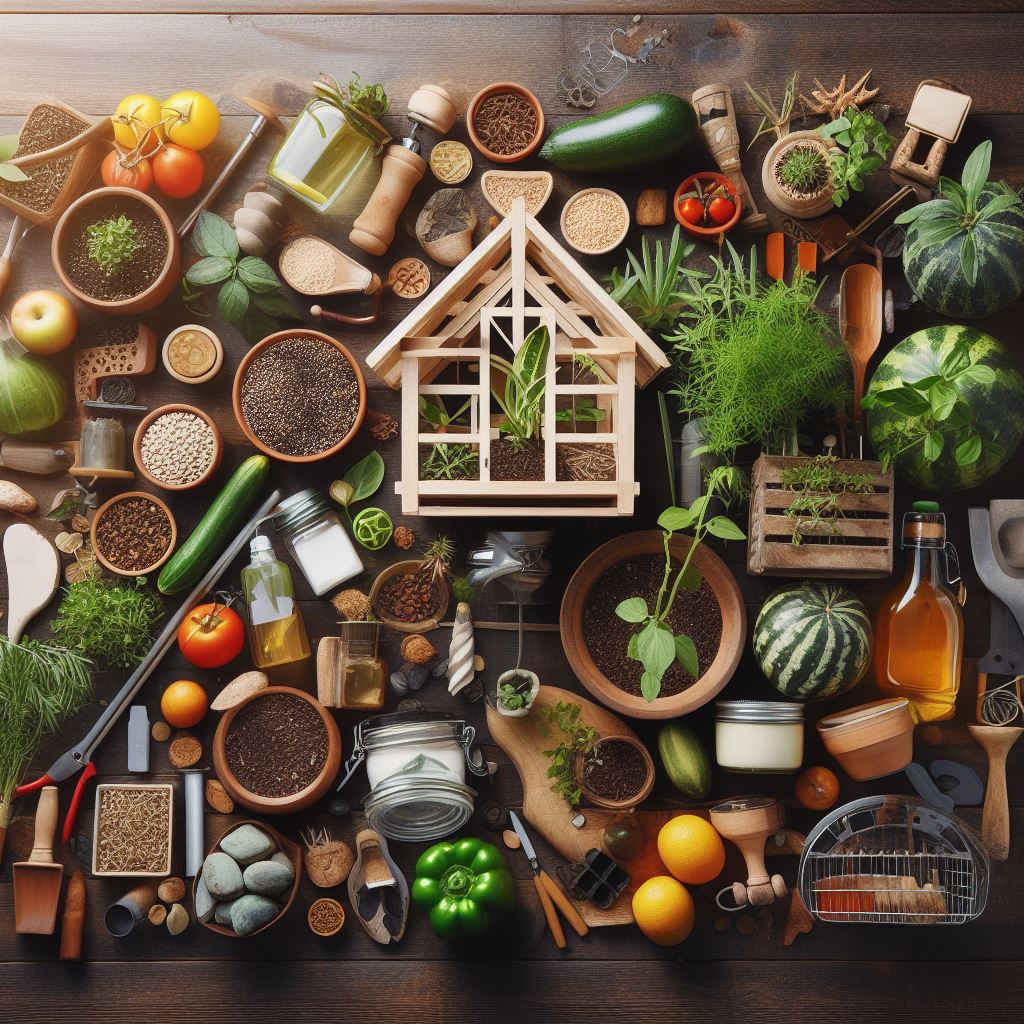
Essential Permaculture Add-ons for Sustainable Growth
Permaculture Add-ons is not just a method of gardening; it’s a revolutionary way of looking at and interacting with the world around us. It’s a sustainable design system that works with nature rather than against it. But as you delve deeper into this incredible world, you may find yourself looking for ways to optimize your permaculture practice.
That’s where permaculture add-ons come in. These tools, techniques, and principles can help you create a more efficient and productive permaculture system. In this comprehensive guide, we will delve into the world of permaculture addons, reviewing their benefits and exploring how you can incorporate them into your permaculture practices.
Understanding Permaculture
Permaculture Add-ons Elevating Your Sustainable Living Practices Permaculture is a unique approach to sustainable living, focusing on the creation of integrated, symbiotic systems that mimic natural ecosystems. It goes beyond merely growing your food or recycling; it’s about creating a lifestyle that harmoniously integrates the home, landscape, and people into a self-sustaining and regenerative system. But even within permaculture, there’s room for innovation and enhancement.
These come in the form of permaculture add-ons – specialized tools and techniques that can be integrated into your existing permaculture system to increase its efficiency and productivity. Permaculture add-ons can range from renewable energy sources like solar panels or wind turbines, water harvesting techniques, soil improvement strategies to even specific plant cultivation methods. They’re like the cherry on top of your permaculture sundae, adding more value to your sustainable living practices.
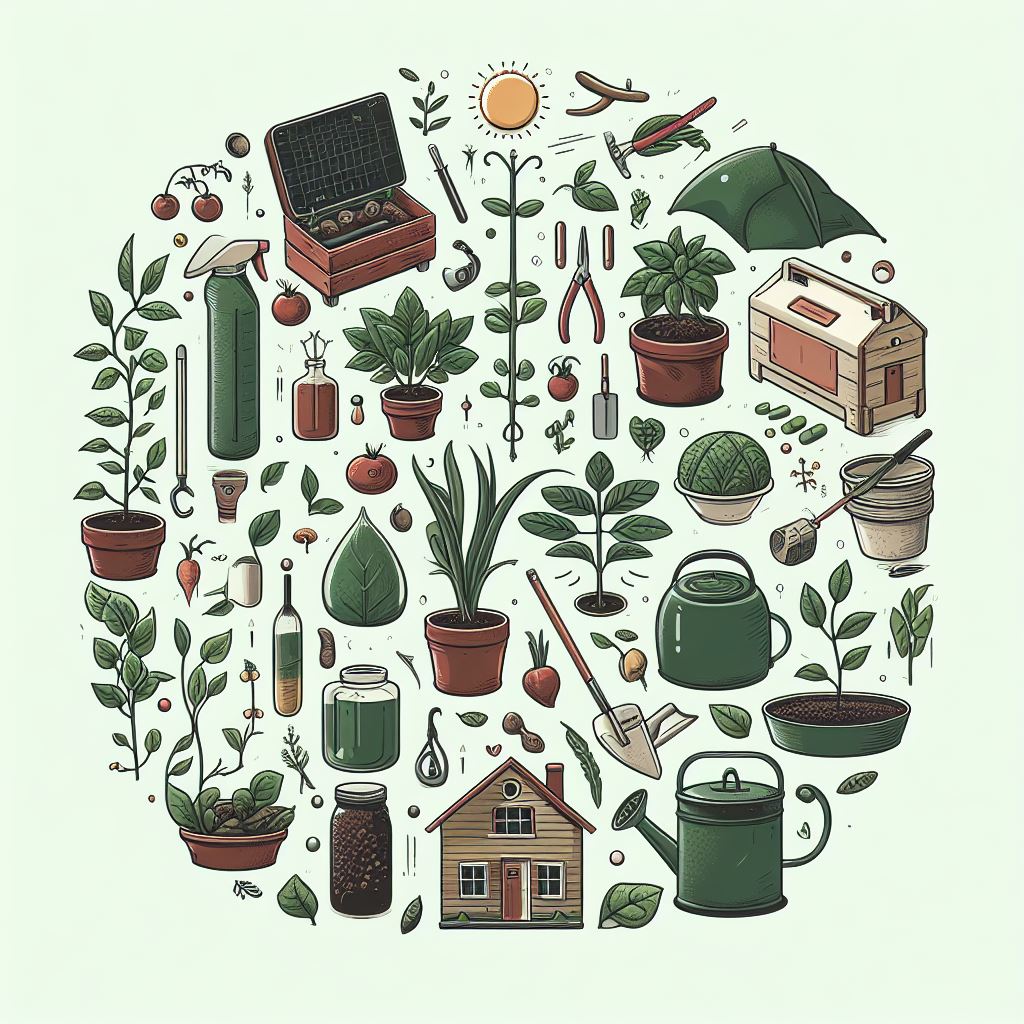
Choosing the right permaculture add-ons can significantly amplify your permaculture system’s performance, providing additional environmental benefits and even potentially increasing your self-sufficiency. It’s all about finding the add-ons that work best with your unique permaculture design, aligning with your sustainability goals, and harmonizing with the local ecosystem. In essence, permaculture add-ons are a testament to the dynamic, adaptable nature of permaculture itself.
They represent the concept’s ongoing evolution and its capacity for continuous improvement and adaptation in response to the ever-changing environmental needs and challenges. Embracing permaculture add-ons is an excellent way to elevate your sustainable living practices, contributing to a healthier planet and a brighter future.
Definition and Principles
Permaculture addons are remarkable enhancements that infuse sustainability and resilience into traditional farming practices. They are rooted in the core principles of permaculture – caring for the earth, caring for people, and fair share. These add-ons are not just about transforming physical spaces but also social systems, making them more harmonious and cyclical.
They range from innovative growing techniques and energy-efficient designs to waste management systems, all cleverly working in tandem to promote a healthy ecosystem. The magic of permaculture addons lies in the fact that they are not just sustainable but regenerative, always giving back more than they take.
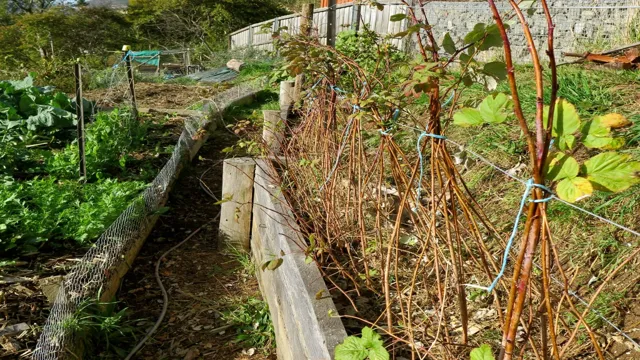
History and Evolution
Delving into the realm of permaculture, one cannot overlook the fascinating history and evolution of permaculture addons. These addons, integral components of sustainable agricultural systems, have undergone significant transformations over the years. From rudimentary tools employed by early agriculturalists to the sophisticated technologies used by modern permaculturists, the journey of permaculture addons is a captivating tale of innovation and adaptation.
As we navigate through this narrative, we’ll uncover how these addons have helped shape the face of sustainable farming, reinforcing the ethos of permaculture by fostering biodiversity, ensuring resource efficiency, and promoting ecological harmony.
Benefits of Permaculture
Permaculture add-ons provide a myriad of benefits, transforming ordinary landscapes into sustainable and productive ecosystems. They aren’t merely an aesthetic upgrade but an ingenious strategy to enhance biodiversity, improve soil health, and promote food security. With these addons, you can optimize water usage, recycle waste, and create a natural pest control system.
They also contribute to mitigating climate change by sequestering carbon. Ingenious, eco-friendly, and cost-effective – permaculture addons are a testament to the perfect harmony between nature and human innovation.
Exploring Permaculture Addons
Permaculture Addons: An Exciting Addition to Your Sustainable Lifestyle In our quest for sustainable living, the concept of permaculture has emerged as a beacon, guiding us toward harmonious co-existence with nature. As we delve deeper into this intriguing world, we uncover various permaculture add-ons that add an extra layer of excitement and efficiency to our green endeavors. Permaculture addons are essentially tools or practices that complement and enhance the basic principles of permaculture.
They encompass a broad range of areas, from natural building and renewable energy systems to water harvesting and soil regeneration strategies. These add-ons are not just about adopting new techniques but also about nurturing a mindset that values sustainability, resilience, and diversity. Imagine your permaculture garden as a flourishing ecosystem.
Now, picture adding a rainwater harvesting system, a permaculture addon, to this setup. This not only ensures a sustainable water supply for your garden but also reduces your reliance on municipal water sources. Or consider incorporating a composting system, another popular permaculture addon, which converts your kitchen waste into nutrient-rich compost for your plants while reducing landfill waste.
Permaculture addons can be tailored to suit your specific needs and circumstances, making them an attractive proposition for anyone looking to boost their sustainability quotient. Whether you’re a seasoned permaculture enthusiast or a curious newcomer, exploring these add-ons can open up a world of possibilities, turning your permaculture journey into a thrilling adventure. Dive into this fascinating realm, and who knows, you might end up discovering an addon that revolutionizes your approach to sustainable living!
Types of Addons
Within the diverse world of permaculture, add-ons play an integral role in enhancing sustainability and productivity. These add-ons, varying from composting systems to water harvesting structures, beekeeping units, and worm farms, are ingenious solutions to environmental challenges. They seamlessly integrate into the permaculture design, promoting a closed-loop system that mimics nature’s efficiency.
In essence, permaculture addons are the secret ingredients that transform a simple garden into a thriving ecosystem, ultimately fostering a healthier planet.
Choosing the Right Addons
Choosing the right permaculture add-ons can significantly enhance your sustainable farming experience. These add-ons, whether they’re specialty tools, irrigation systems, or companion plants, can streamline your processes, improve your yield and ensure that your land thrives. But with so many add-ons available, it can be a daunting task to choose the ones that will truly be beneficial.
Understanding your specific needs, researching options, and making strategic decisions can help you select the add-ons that will perfectly complement your permaculture design. Remember, a wise choice can make your permaculture journey not only productive but also enjoyable.
Installation and Maintenance
In the realm of sustainable living, permaculture addons are the unsung heroes. These little enhancements can significantly boost the functionality and productivity of your permaculture design, making it more sustainable and efficient. However, their installation and maintenance require a certain level of knowledge and expertise.
From understanding the correct placement for optimal performance to regular upkeep, the process can be a bit intricate. But don’t let this deter you – with the right guidance and a dash of patience, you can transform your permaculture space into an ecosystem that thrives with minimal human intervention. It’s time to let these add-ons work their magic!
Impact of Permaculture Addons
The Role and Significance of Permaculture Addons in Sustainable Agriculture As the world is progressively shifting towards sustainable living, the role of permaculture addons cannot be overstated. These elements are integral to the permaculture design process, enhancing the functionality and productivity of any system naturally and sustainably. Permaculture addons are essentially tools, techniques, or modifications that can be incorporated into a permaculture design.
They are meant to support the overall system, improving resource efficiency and promoting ecological balance. From rainwater harvesting systems to composting toilets, these add-ons are pivotal in creating a self-sustaining ecosystem. These add-ons are not just about improving a system’s output.
They are about creating a holistic and balanced ecosystem where every element works in harmony with the other. This is where the beauty of permaculture lies. It’s not just a method of farming but a lifestyle that seeks to build strong, resilient, and self-sufficient communities.
By utilizing these permaculture add-ons, we are not just enhancing our relationship with the environment but also promoting a healthier and more sustainable future. After all, as the saying goes, “We do not inherit the earth from our ancestors; we borrow it from our children.” And what could be a better way to ensure we leave a thriving planet for future generations than by embracing the principles of permaculture and its innovative add-ons?
Environmental Benefits
Harnessing the Power of Permaculture Addons: A Green Revolution In the quest for a sustainable future, permaculture addons are emerging as a formidable ally. These eco-conscious tools not only promote biodiversity but also stimulate natural processes that enrich soil fertility, manage water resources, and cut down waste. The genius of permaculture addons lies in their ability to mimic nature’s intricate balance and resilience, creating self-sustaining ecosystems that are both abundant and harmonious.
This green revolution is not just about growing plants; it’s about cultivating a healthier planet. So, let’s delve into the environmental benefits of permaculture addons and explore their potential for a greener tomorrow.
Economic Advantages
Harnessing Economic Advantages through Permaculture Add-ons Economic prosperity and sustainability are no longer mutually exclusive. Enter the world of permaculture add-ons, a clever, eco-centric solution that’s shaking up traditional ideas of wealth generation. By integrating these add-ons into existing systems, businesses and individuals can reap significant economic benefits.
These sustainable modifications, such as rainwater harvesting or composting, not only reduce resource dependency but also create new revenue streams. It’s a witty fusion of economics and ecology, proving that green can indeed be the new gold. So, let’s delve into the world of permaculture add-ons, the unsung heroes of sustainable economic growth.
Practical Examples of Permaculture Addons
Section Title: Harnessing Nature’s Genius: A Close Look at Practical Permaculture Addons Permaculture is not just a buzzword tossed around by environmentalists. It’s a philosophy of life, a method of cultivation, and a system of sustainable living that incorporates the wisdom of the natural world into everyday human practices. The concept has led to the development of a variety of permaculture addons—additional components that contribute to the overall efficiency and sustainability of a permaculture system.
One such example of these permaculture addons is the creation of food forests. A food forest is a multi-layered, perennial, and sustainable garden modeled after a natural forest. This system, which includes a combination of trees, shrubs, ground cover, vines, and root crops, mimics the mutually beneficial relationships found in natural ecosystems.
Each plant serves a purpose, whether it’s for food, shade, nitrogen fixation, or pest control, resulting in a sustainable, self-maintaining system that provides a bounty of organic produce. Another practical example is the use of natural building materials. In permaculture, the focus is on using locally sourced, renewable, and biodegradable materials for constructing homes and other structures.
This not only reduces the environmental impact but also supports local economies and promotes a closer connection to nature. Rainwater harvesting systems also form a critical part of many permaculture designs. These systems capture and store rainwater for use in irrigation, reducing dependency on conventional water sources and helping to conserve this precious resource.
The brilliance of these permaculture addons lies not just in their sustainability but also in their adaptability. Be it a sprawling rural farm or an urban backyard, these add-ons can be customized to fit various landscapes and climates, proving that anyone, anywhere, can harness the genius of nature in their pursuit of a more sustainable lifestyle.
Frequently Asked Questions
What are some of the permaculture addons that I can use in my garden?
Some permaculture addons that you can use in your garden include composting systems, rainwater harvesting systems, chicken tractors, and edible forest gardens. These add-ons can help you create a more sustainable and self-sufficient garden.
How can permaculture addons improve the environment?
Permaculture add-ons can improve the environment by promoting biodiversity, improving soil health, reducing waste and overall carbon footprint, and conserving water. They are designed to work with nature rather than against it, which helps to preserve the natural ecosystem.
Can I use permaculture add-ons in an urban setting?
Yes, permaculture addons can be adapted to fit urban settings. Examples include vertical gardens, rooftop gardens, rainwater collection systems, and compost bins. These add-ons can help urban dwellers grow their food and reduce their environmental impact.
Are permaculture addons expensive to implement?
The cost of implementing permaculture add-ons can vary widely depending on the type of addon, the size of your property, and whether you are doing the work yourself or hiring a professional. However, many permaculture techniques can be done at a low cost or even for free, and they can often save you money in the long run by reducing your need for store-bought produce and garden supplies.
What are the benefits of using permaculture addons in my garden?
Permaculture addons offer numerous benefits, including increased biodiversity, improved soil health, water and waste conservation, and the ability to produce your food. They also promote a more sustainable and self-sufficient lifestyle, which can provide a sense of fulfillment and peace of mind.
Conclusion
“Permaculture addons” are like the secret ingredients to a perfect recipe. They enhance the overall system, making it more efficient, sustainable, and productive. Just like the cherry on top of a sundae, they might not make up the bulk, but they certainly add the crucial finishing touch.So, whether it’s a worm farm to enrich your soil or a rainwater harvesting system to utilize nature’s gifts, these add-ons are the nifty tools in a permaculturist’s eco-friendly arsenal. They are the clever solutions to achieving a harmonious blend of ecology and agriculture, proving that often, the most ingenious ideas come from working with nature, not against it.
-

Unlocking the Potential of Forest Garden Integrations
Immerse yourself in the vibrant world of Forest Garden Integrations, a harmonious blend of nature and agriculture that takes sustainability to the next level. This blog post unravels the mysteries of forest garden integrations, offering insightful tips, practical information, and inspiring stories to help you cultivate your slice of paradise. As we delve into the heart of agroforestry, you’ll discover how integrating diverse plant species, from towering trees to humble ground covers, can create a resilient, productive, and eco-friendly garden.
So, whether you’re a seasoned gardener aiming to explore new horizons or a green-thumbed newbie eager to embark on a sustainable gardening journey, this enlightening post will guide you through the complexities and wonders of forest gardening. Let’s walk this green path together, nurturing our understanding of nature and sowing the seeds for a more sustainable future.
Understanding Forest Gardens
Forest garden integrations are a fascinating concept that combines the principles of ecology, permaculture, and sustainable practices. This multidisciplinary approach to gardening is far more than just planting trees and hoping for the best. It’s a strategic method of utilizing nature’s wisdom to create a resilient and productive ecosystem right in your backyard.
The essence of a forest garden lies in its design, which mimics a natural forest. In essence, it’s a planned forest filled with edible and useful plants. These gardens are layered, meaning they have various strata, like tall trees, low trees, shrubs, herbaceous plants, ground cover, climbers, and root crops, all integrated into one system.

Forest garden integrations aim to maximize the symbiotic relationships between these diverse plants, insects, and wildlife. It’s like conducting a nature’s orchestra, where each player has a specific role that contributes to the harmony of the ecosystem. The tall trees provide shade and habitat for birds, the shrubs bear fruits and berries, the herbaceous plants enrich the soil, and the climbers use the vertical space efficiently.
Unlike traditional gardening, which often relies heavily on human intervention, forest gardens are mostly self-maintaining. After the initial set-up, nature takes over. The forest garden integrations allow for natural pest control, soil fertility, and water management, reducing the need for artificial inputs.
In this era of climate change and environmental degradation, forest garden integrations offer a sustainable way to grow food, promote biodiversity, and restore ecosystems. They embody the principle of working with nature, not against it. It’s a testament to the fact that our survival and well-being are intrinsically linked to the health of our planet.
So, next time you step into a garden, try to see it not just as a collection of plants but as a bustling community of life, a small-scale forest, a testament to the beauty and resilience of nature.
Concept and History of Forest Gardens
“Delving into the verdant world of forest garden integrations, we explore a concept that marries ecological wisdom with agricultural innovation. This practice, steeped in indigenous knowledge, mimics natural woodland ecosystems to create sustainable food systems. From its ancient roots in tropical regions to its modern iterations in diverse climates, the history of forest gardening is as layered as the gardens themselves.
It’s a tale of synergy where trees, shrubs, and crops all play crucial roles, creating a harmonious blend of biodiversity. The story of forest gardens is indeed a testament to nature’s ingenious integrations.”

Benefits of Forest Gardens
“Embracing forest garden integrations offers a myriad of benefits that are as profound as they are practical. This sustainable gardening approach not only enhances biodiversity but also aids in soil restoration and carbon sequestration. It’s a haven for wildlife, a smorgasbord of organic produce, and a living classroom for eco-stewardship.
Forest gardens are not just a green thumb’s playground but a crucial step towards environmental balance. They are the epitome of synergy, where each element contributes to a thriving, self-sustaining ecosystem. So, let’s delve deeper into the wonders of forest garden integrations and explore the benefits they offer to us and our planet.
Key Components of Forest Gardens
Forest garden integrations are an ingenious blend of natural ecology and human ingenuity, forming a self-sustaining ecosystem that provides food, shelter, and other resources. A well-designed forest garden is a symphony of interlocking elements, each playing a crucial role in the overall harmony of the system. The first component is the canopy layer, comprised of tall fruit and nut trees.
These arboreal giants form the backbone of the forest garden, providing shade and creating a suitable microclimate for the understory plants. Next is the understory layer, which includes smaller fruit and nut trees, shrubs, and vines. These plants perform a dual role by contributing to the diversity of the ecosystem and producing additional food resources.
The ground layer is made up of herbs, vegetables, and other edible plants that thrive in the dappled sunlight of the forest floor. These plants not only provide sustenance but also contribute to soil fertility through their extensive root systems. Lastly, the soil itself is a key component of forest garden integrations.
This complex mixture of organic matter and minerals is home to countless microbes, insects, and other organisms that decompose organic matter and recycle nutrients, maintaining the garden’s fertility. In conclusion, forest garden integrations are not only a sustainable way of producing food but also a means of preserving biodiversity and fostering ecological resilience. By understanding and harnessing the intricate relationships between these components, we can create forest gardens that are not just productive but also truly sustainable.
Types of Plants in a Forest Garden
In a forest garden, several types of plants function as key integrations, each playing a unique role in maintaining the garden’s ecosystem. These include canopy trees, smaller fruit and nut trees, shrubs, herbs, ground cover plants, climbers, and root crops. This eclectic mix of flora not only ensures a dense, layered structure that mimics a natural forest but it also promotes biodiversity and yield variety.
The cleverly designed forest garden integration presents a witty alternative to traditional gardening, offering a sustainable solution that enhances soil fertility, promotes wildlife, and takes advantage of vertical space.
Forest Layering System
In the realm of sustainable agriculture, forest garden integrations serve as an ingenious solution. This ecosystem-inspired approach mimics the natural layering system found in forests, creating a dynamic, multi-tiered garden teeming with biodiversity. The forest layering system integrates trees, shrubs, and plants at various heights, fostering a symbiotic relationship among them.
This not only optimizes space but also enhances soil fertility, reduces pest and disease incidence, and promotes a healthier, more resilient garden. So, let the forest be your guide and embrace the wisdom of its intricate, harmonious layering system to cultivate a thriving, sustainable garden.
Integrating Forest Gardens
Integrating Forest Gardens: A Symphony of Sustainability In the grand orchestra of ecological design, forest garden integrations play the role of a symphony conductor, harmoniously blending various parts of an ecosystem into a melodious whole. The concept of forest gardening isn’t new. It’s an age-old practice, tracing its roots back to ancient civilizations.
However, in the modern context, it has evolved into a sophisticated strategy for sustainable living. Forest garden integrations involve creating multilayered, perennial polycultures of trees, shrubs, herbs, vines, and groundcovers. It is a marriage of agriculture and forestry that mimics a young natural woodland, a habitat that’s supremely efficient at packing lots of biomass into a small area.
By specifically selecting plants that offer direct benefits to humans – be it food, fiber, or medicinal products – we essentially create an ecosystem that’s both self-sustaining and human-sustaining. But the magic of forest garden integrations doesn’t stop at being a source of produce. It extends to enhancing biodiversity, sequestering carbon, and improving soil health.
Moreover, it offers a resilient system that can weather challenges such as climate change and pest infestations better than conventional farming practices. In essence, forest garden integrations are akin to conducting a symphony of sustainability. Each plant plays its part in the ecosystem, and the whole system thrives, producing a melody of benefits.
It’s a brilliant masterpiece of nature and human innovation, resonating with the tune of resilience, productivity, and sustainability.
Steps to Create a Forest Garden
Creating a forest garden involves a series of strategic steps, each contributing to the sustainable harmony of the final green haven. This process, known as forest garden integration, begins with selecting an ideal location that receives adequate sunlight and rain. The initial groundwork involves soil preparation and planting of tall trees to provide a canopy.
Subsequently, smaller plants, shrubs, and groundcovers are added methodically, ensuring diversity and balance. The final steps include regular maintenance and monitoring for potential issues. Remember, patience is key in this ecological endeavor, as true beauty takes time to flourish.
Maintaining Your Forest Garden
Maintaining your forest garden requires a harmonious blend of knowledge, patience, and constant care. A successful forest garden integration is all about creating a self-sustaining ecosystem that not only thrives on its own but also increases biodiversity and productivity. It involves strategically choosing plant species that complement each other, ensuring regular pruning to maintain balance and shape, and adopting organic pest management practices.
Remember, the ultimate goal is to create a thriving natural environment that needs minimal intervention, so let nature take its course while you provide the necessary guidance.
Case Studies of Successful Integrations
Unearthing the Magic of Forest Garden Integrations: A Case Study Exploration The realm of forest garden integrations is a fascinating landscape, a testament to the power of nature and human ingenuity working harmoniously together. This blog section delves into compelling case studies that represent the epitome of successful forest garden integrations. These living examples of sustainable agriculture not only yield a bounty of food but also create a balanced ecosystem.
One profound example is the “Incredible Edible Forest Garden,” nestled in the heart of England. This project has transformed an ordinary space into a veritable cornucopia of edible plants, intertwining various food-producing trees, shrubs, and herbs in a self-sustaining system. We will unpack how ingenious planning and meticulous execution have led to a thriving garden that benefits both humans and the environment.
Another case study takes us to the tropics of Thailand, where an innovative farmer has integrated native trees and exotic species into a rich, productive forest garden. This integration has resulted in a garden that not only feeds his family but also contributes to the local economy, all while preserving biodiversity. In these case studies, the focus is not merely on the aesthetic appeal or the food production aspect of forest garden integrations.
It’s about creating a sustainable model that enhances the overall health of the ecosystem, contributing to soil fertility, water conservation, and biodiversity, among other benefits. These success stories underscore the potential of forest garden integrations to transform barren or under-utilized spaces into thriving ecosystems, echoing a compelling testament to the power of nature when paired with human innovation and respect. They serve as a beacon of hope and inspiration for those seeking to create sustainable and productive landscapes, inviting us all to partake in the symphony of nature’s bounty.
Forest Garden in Urban Setting
Incorporating forest garden integrations into an urban environment is an innovative approach to sustainable living. This concept, often described as ‘urban edible landscaping’, applies the principles of a forest ecosystem to a city setting, resulting in a harmonious blend of nature and urban life. It’s not just about growing trees and plants; it’s about creating a self-sustaining, biodiverse habitat that provides food, fosters wildlife, and enhances our well-being.
With careful planning and design, your urban space can transform into a verdant oasis, proving that concrete jungles and forest gardens can co-exist beautifully.
Forest Garden in Rural Setting
In the realm of sustainable agriculture, forest garden integrations in rural settings are swiftly gaining popularity. These lush, green oases are more than just aesthetically pleasing. They are dynamic ecosystems that leverage the principles of permaculture to produce food, fuel, fiber, and fodder.
By mimicking the structure and function of natural forests, forest gardens open up a world of possibilities for rural communities, providing not just sustenance but also opportunities for income generation and biodiversity conservation. So, step into the world of forest gardens and discover the potential for a greener, more sustainable future.
Frequently Asked Questions
What are the essential elements for forest garden integrations?
The essential elements for forest garden integrations include a diverse selection of edible and beneficial plants, a well-thought-out design that mimics natural forest patterns, efficient water and nutrient cycling systems, and a strong emphasis on perennial and self-seeding crops.
What is the role of permaculture in forest garden integrations?
Permaculture plays a crucial role in forest garden integrations by providing a set of design principles that mimic the patterns observed in nature. These principles guide the creation of sustainable and self-sufficient agricultural systems, like a forest garden.
How can forest garden integrations improve food security?
Forest garden integrations can improve food security by providing a diverse range of food crops all year round. Its emphasis on perennial and self-seeding crops also means less dependency on external inputs like seeds and fertilizers.
What challenges might one face while implementing forest garden integrations?
Some challenges in implementing forest garden integrations may include initial setup and maintenance costs, the need for specialized knowledge and skills, the time it takes for the system to become fully productive, and potential pests and diseases.
How do forest garden integrations benefit the environment?
Forest garden integrations can significantly benefit the environment by reducing soil erosion, increasing biodiversity, creating wildlife habitats, and sequestering carbon. It also uses less water and energy than conventional farming methods.
Conclusion
Forest garden integrations are all about harmoniously merging the age-old wisdom of the forest with the innovative practices of gardening. It’s not just about planting trees and growing vegetables but rather creating a self-sustaining ecosystem that benefits both man and nature. It’s like hosting a symphony in your backyard, where every plant, insect, and bird has a role to play in the orchestra of life.So, next time you think about gardening, remember – you’re not just a gardener; you’re the conductor of a green symphony. Embrace the forest, nurture the garden, and watch nature play its masterpiece.
-

Unlocking Eco-Friendly Solutions: A Comprehensive Guide to Sustainable Design Tools
In an era marked by rapid technological advancements and increasing environmental concerns, the need for sustainable design solutions is more critical than ever. The design industry is not just about creating aesthetically pleasing products anymore; it’s about creating sustainable designs that contribute positively to the environment. This progressive shift has led to the emergence of various sustainable design tools, enabling designers to craft solutions that are not only innovative but also environmentally friendly.
In this in-depth exploration, we delve into the world of sustainable design tools, their importance, and how you can use them to create designs that are a win-win for both your business and the planet. Stay with us as we navigate through this green design landscape, unearthing the tools that have the power to transform your design process and keep you ahead in this sustainability-driven era.
Table of Contents
Understanding Sustainable Design
Sustainable design is a concept that’s creating waves in the world of architecture and design. It’s all about designing buildings and spaces that are not only aesthetically pleasing but also environmentally friendly. This approach is aimed at reducing the negative impact of the design on the environment while enhancing the health and comfort of the occupants.
Here’s where sustainable design tools come into play. These tools are indispensable for architects and designers who are committed to creating sustainable designs. They help in determining the environmental impact of a design even before it’s realized, providing a comprehensive analysis that covers everything from energy consumption to water use and waste production.
Such tools are a boon to sustainable design, allowing for more accurate and efficient planning. These sustainable design tools are not just about numbers and statistics. They also provide valuable insights on how to optimize a design for sustainability.
For instance, they can suggest the best materials to use, how to maximize natural light, or even how to incorporate renewable energy sources. In essence, sustainable design tools are like a secret weapon for architects and designers, enabling them to create designs that are not just beautiful but also environmentally friendly. They are revolutionizing the way we design spaces, marking a significant step towards a more sustainable future.
It’s high time we all recognize the potential of these tools and start using them to create more sustainable designs. Because after all, design is not just about aesthetics but also about the impact it has on the world around us.

Impact on Environment
The impact on the environment has become a pressing concern in recent years. As a response to this, sustainable design tools are emerging as an innovative solution to mitigate environmental degradation. These tools are ingeniously programmed to evaluate and enhance the sustainability quotient of designs, making them eco-friendly.
By incorporating sustainable design tools in our practices, we can effectively reduce our carbon footprint and contribute to a greener future. It’s the high time we leverage these smart tools to design sustainably and live responsibly. After all, a green planet is a clean planet!
Types of Sustainable Design Tools
Type of Sustainable Design Tool Description Life Cycle Assessment (LCA) Software LCA software helps assess the environmental impact of a product, process, or system throughout its entire life cycle, from raw material extraction to disposal. It quantifies factors such as energy use, emissions, and resource consumption. Examples include GaBi, SimaPro, and OpenLCA. Energy Modeling Software Energy modeling tools simulate the energy performance of buildings or systems. They help architects and engineers optimize energy efficiency and make informed decisions regarding HVAC systems, insulation, and renewable energy integration. Examples include EnergyPlus and DesignBuilder. Building Information Modeling (BIM) Software BIM software allows architects and construction professionals to create digital representations of building designs. It enables collaboration, visualization, and coordination throughout the design and construction phases, optimizing resource use and reducing waste. Examples include Autodesk Revit and ArchiCAD. Sustainable Site Analysis Tools These tools assist in evaluating and optimizing the sustainability of building sites. They consider factors like solar orientation, water management, green space, and site accessibility. Tools include GIS software, solar path calculators, and rainwater harvesting calculators. Renewable Energy Assessment Tools Renewable energy assessment tools help assess the feasibility of integrating renewable energy sources such as solar panels, wind turbines, or geothermal systems into building designs. They consider factors like energy production potential and return on investment. Green Building Certification Software Software tools for green building certification (e.g., LEED, BREEAM) guide project teams through the certification process by providing checklists, documentation templates, and calculators for sustainable design elements. Daylighting and Lighting Simulation Software Daylighting and lighting simulation tools help optimize natural and artificial lighting in buildings. They analyze how daylight enters spaces, reducing the need for artificial lighting and improving occupant comfort. Examples include Radiance and DIALux. Materials and Product Sustainability Databases Databases provide information on the environmental impact of various building materials and products. They help architects and designers choose sustainable and eco-friendly materials based on factors like embodied carbon, recyclability, and certifications (e.g., EPD, HPD). Examples include the BuildingGreen database and the Embodied Carbon in Construction Calculator (EC3). Water Efficiency and Management Tools Tools for water efficiency and management assess water usage and help optimize water-saving strategies in buildings, landscaping, and infrastructure. They include water footprint calculators and rainwater harvesting design software. Waste Management and Recycling Software These tools assist in waste reduction and management by tracking waste streams, setting recycling goals, and optimizing waste disposal practices. They may include waste tracking software and recycling calculators. Transportation and Mobility Planning Tools For urban planning and sustainable transportation, these tools analyze and model transportation options, helping cities and regions reduce congestion, improve public transit, and encourage sustainable mobility choices. Environmental Impact Assessment (EIA) Software EIA software helps assess the environmental consequences of proposed projects or developments, ensuring that they comply with environmental regulations and sustainability goals. Application in Various Industries
Sustainable design tools are not just limited to one industry or sector. They encompass a wide range of applications across various industries, proving their versatility and utility in today’s world, where sustainability has become a primary concern. In the construction and architecture sector, sustainable design tools are being utilized to create eco-friendly buildings.
These tools enable architects to design structures that minimize energy consumption, reduce waste, and utilize renewable materials. They have the potential to revolutionize the construction industry by making sustainability a key part of every construction project. The fashion industry, known for its considerable environmental impact, is also leveraging sustainable design tools.
Designers use these tools to create clothing that requires less water and energy to produce and can be recycled or composted at the end of its life cycle. This approach counters the harmful effects of fast fashion and promotes a more sustainable fashion industry. In the technology sector, sustainable design tools are helping manufacturers to develop electronic devices that are energy-efficient and easy to recycle.
They are also being used to design data centers that consume less electricity and have a smaller carbon footprint. In the automotive industry, these tools are being utilized to design vehicles that are more fuel-efficient, produce fewer emissions, and use more sustainable materials. This is crucial given the significant contribution of vehicles to global carbon emissions.
The agriculture industry is also benefitting from sustainable design tools. They are helping farmers and agricultural businesses to design farming practices and systems that are more sustainable, use fewer resources, and have less impact on the environment. In essence, sustainable design tools are transforming industries, pushing them towards more sustainable practices and operations. As these tools continue to evolve and improve, their use will only become more widespread, leading to a more sustainable and environmentally friendly world.
Also Learn: Unlocking the Future of Climate Change: An In-depth Exploration of Carbon Sequestration Tools
Future of Sustainable Design Tools
As we propel into a future where sustainability is no longer an option but a necessity, the role of sustainable design tools becomes more crucial than ever before. These tools are the magic wands of designers, architects, and engineers, enabling them to create innovative solutions that contribute to a more sustainable world. The future of sustainable design tools is set to be a dynamic one.
With advancements in technology, these tools are becoming more sophisticated, providing unprecedented precision and efficiency. Artificial Intelligence and Machine Learning, for instance, are being integrated to optimize material usage, reduce waste, and predict environmental impact. Furthermore, the advent of augmented and virtual reality in the design realm is offering designers the ability to visualize and test their creations in a virtual environment before they materialize in the real world.
This not only saves resources but also ensures the highest levels of sustainability. In essence, the future of sustainable design tools is not just about creating eco-friendly designs, but it is also about transforming the design process itself. It’s about instilling sustainability in every step, from conceptualization to production, making it a holistic approach rather than a mere afterthought.
Yet, while technology is shaping the future of these tools, it is the human factor that will ultimately determine their success. After all, tools are only as good as the hands that wield them. Therefore, cultivating a mindset of sustainability among designers and promoting the use of these tools is of utmost importance.
Frequently asked question
What are sustainable design tools?
Sustainable design tools are methods, strategies, or software used to create environmentally friendly and energy-efficient designs. They can be used in a variety of fields such as architecture, product design, and urban planning. These tools often focus on minimizing waste, reducing energy consumption, and utilizing renewable resources.
How do sustainable design tools contribute to environmental conservation?
Sustainable design tools contribute to environmental conservation by facilitating the creation of designs that minimize waste, reduce energy consumption, and incorporate renewable resources. By using these tools, designers can ensure that their projects have a minimal impact on the environment. This can result in significant reductions in carbon emissions and other forms of environmental pollution.
Can you give examples of sustainable design tools?
Yes, some examples of sustainable design tools include energy analysis software like EnergyPlus and eQuest, material lifecycle assessment tools like Athena and GaBi, and green building rating systems like LEED and BREEAM. These tools help designers and architects to assess the environmental impact of their designs and make necessary adjustments to improve sustainability.
Why is the use of sustainable design tools important in today’s world?
The use of sustainable design tools is important in today’s world because they help to address some of the most pressing environmental challenges we face, such as climate change and resource depletion. By using these tools, designers and architects can create solutions that are not only aesthetically pleasing but also environmentally responsible.
How do sustainable design tools impact the cost of a project?
While using sustainable design tools may increase the initial cost of a project due to the need for specialized materials or techniques, they can often lead to significant cost savings in the long run. This is because sustainable designs often use resources more efficiently, resulting in lower operational costs. In addition, they can also enhance the value of a project by making it more attractive to environmentally conscious consumers or tenants.
Conclusion
Sustainable design tools are much more than just fancy add-ons in the design world. They are akin to superheroes in a comic book, with special powers to conserve resources, reduce waste, and combat climate change. They are like the secret agents of sustainability, working undercover in our buildings, products, and systems to ensure they are designed with the future in mind. They are the wizards casting spells of efficiency and longevity. In the grand scheme of life, sustainable design tools are not just about creating ‘green’ products and buildings. They are about creating a better, more sustainable world. So, let’s rephrase ‘sustainable design tools’ to ‘tools for sustaining life’ because that’s what they truly are.